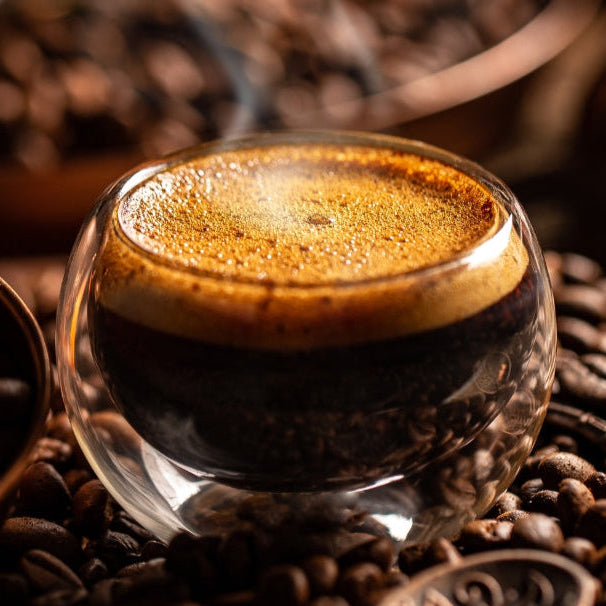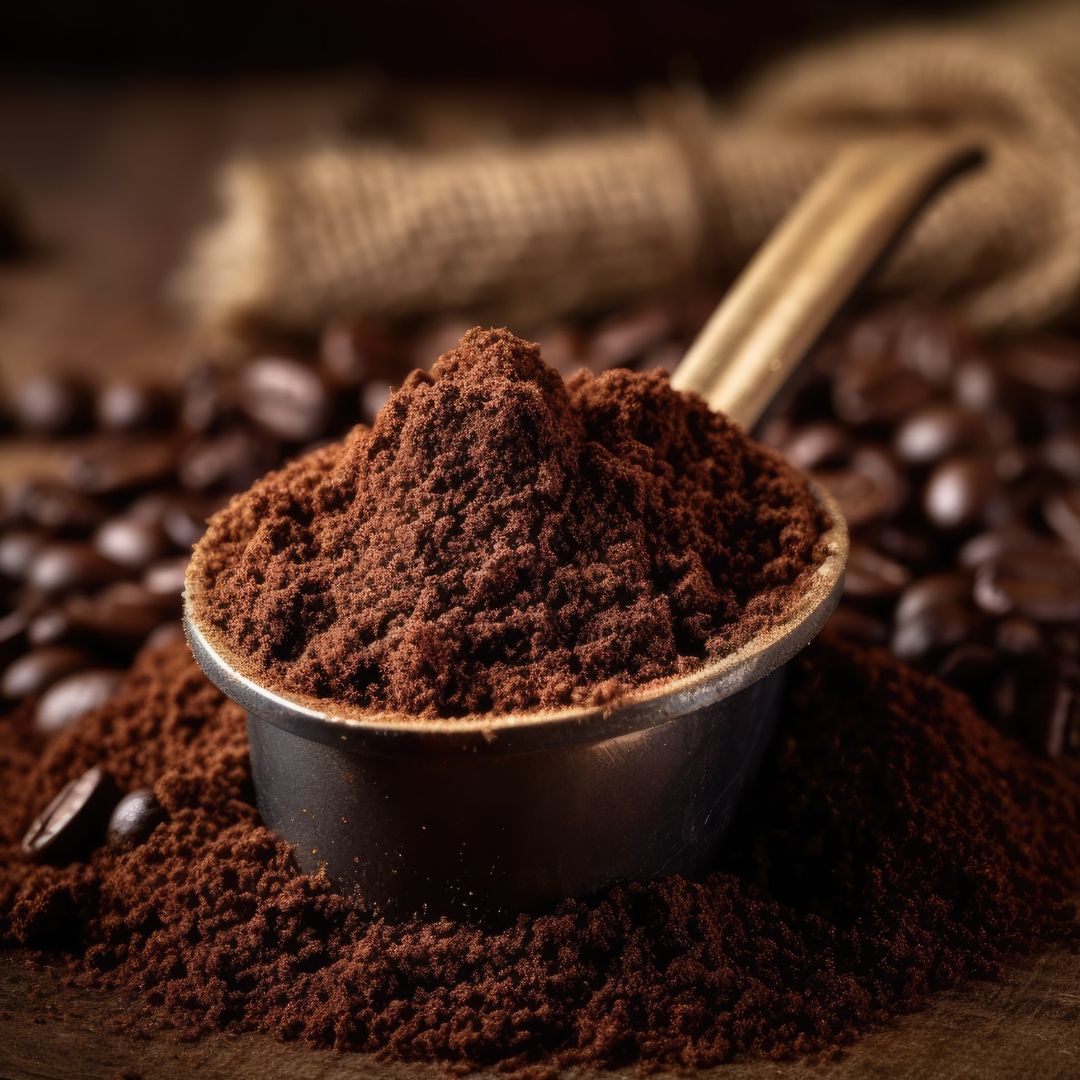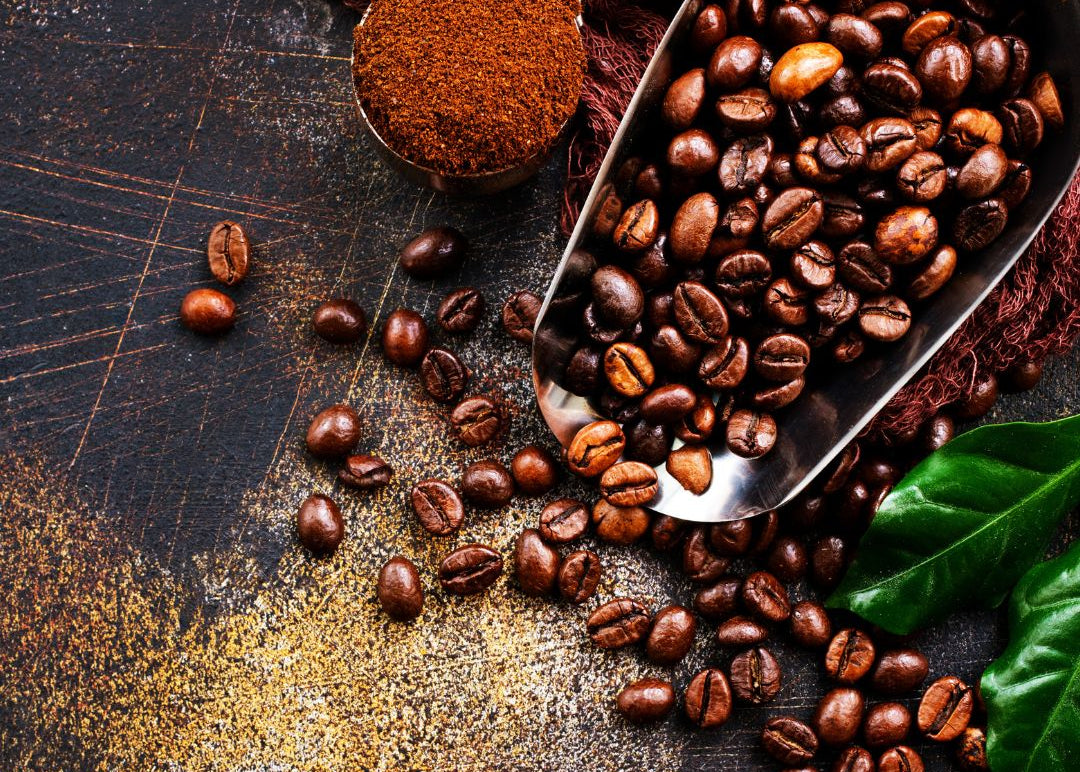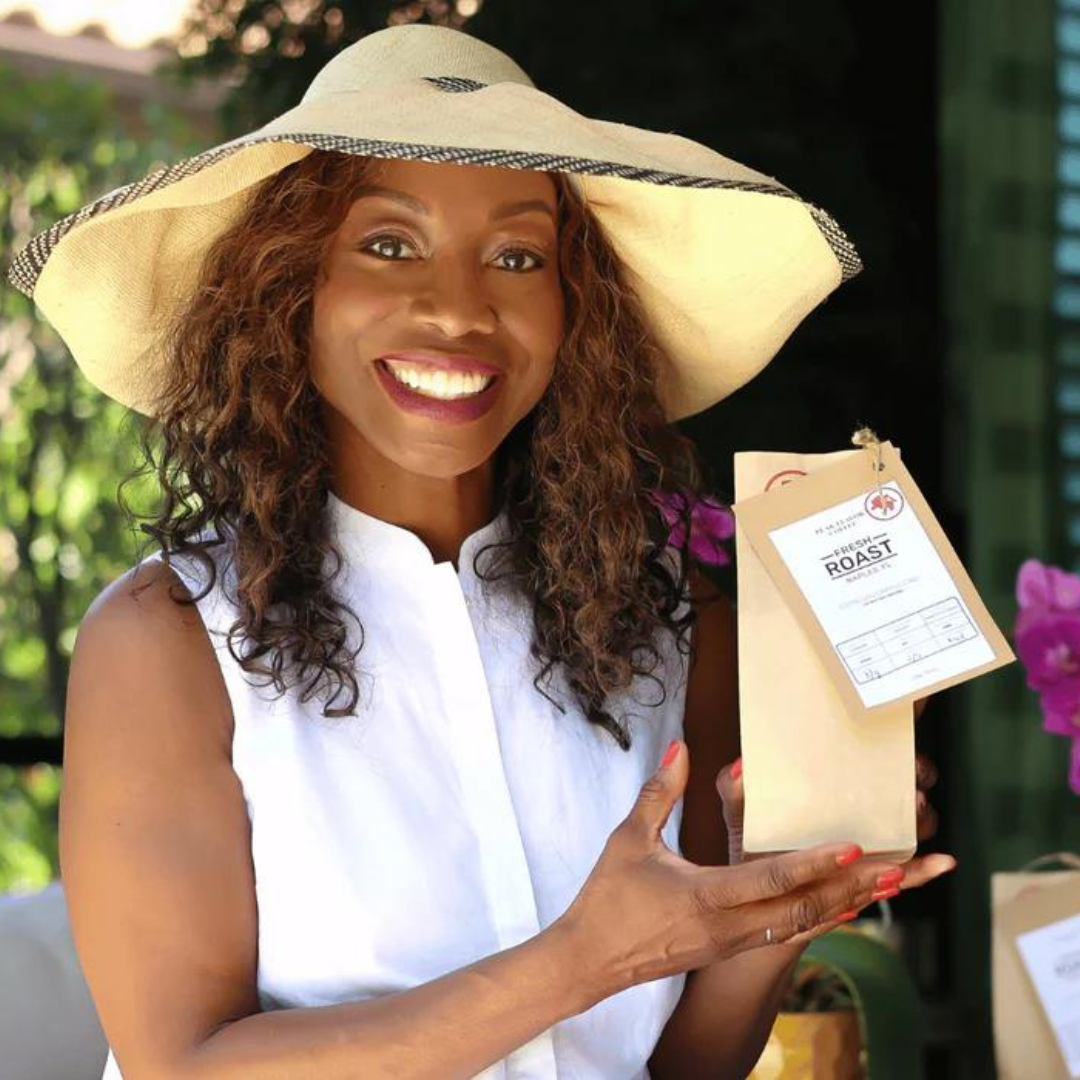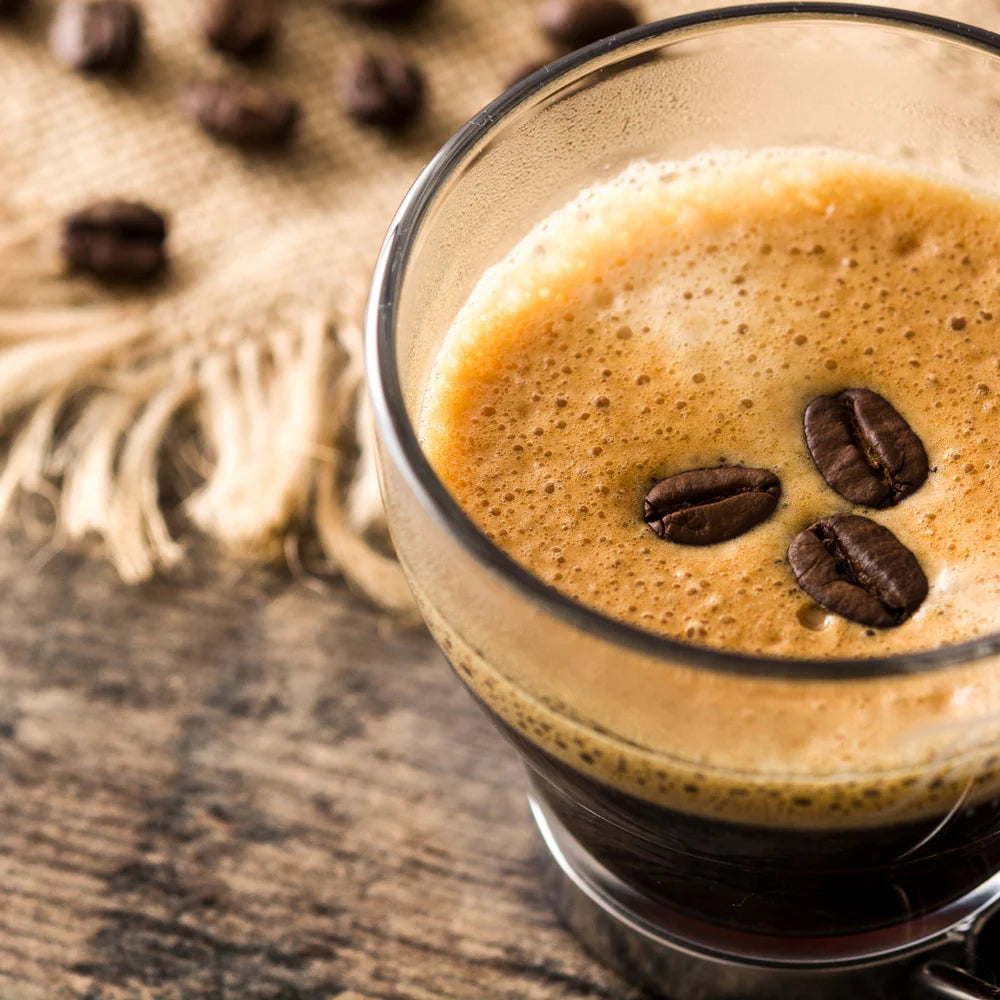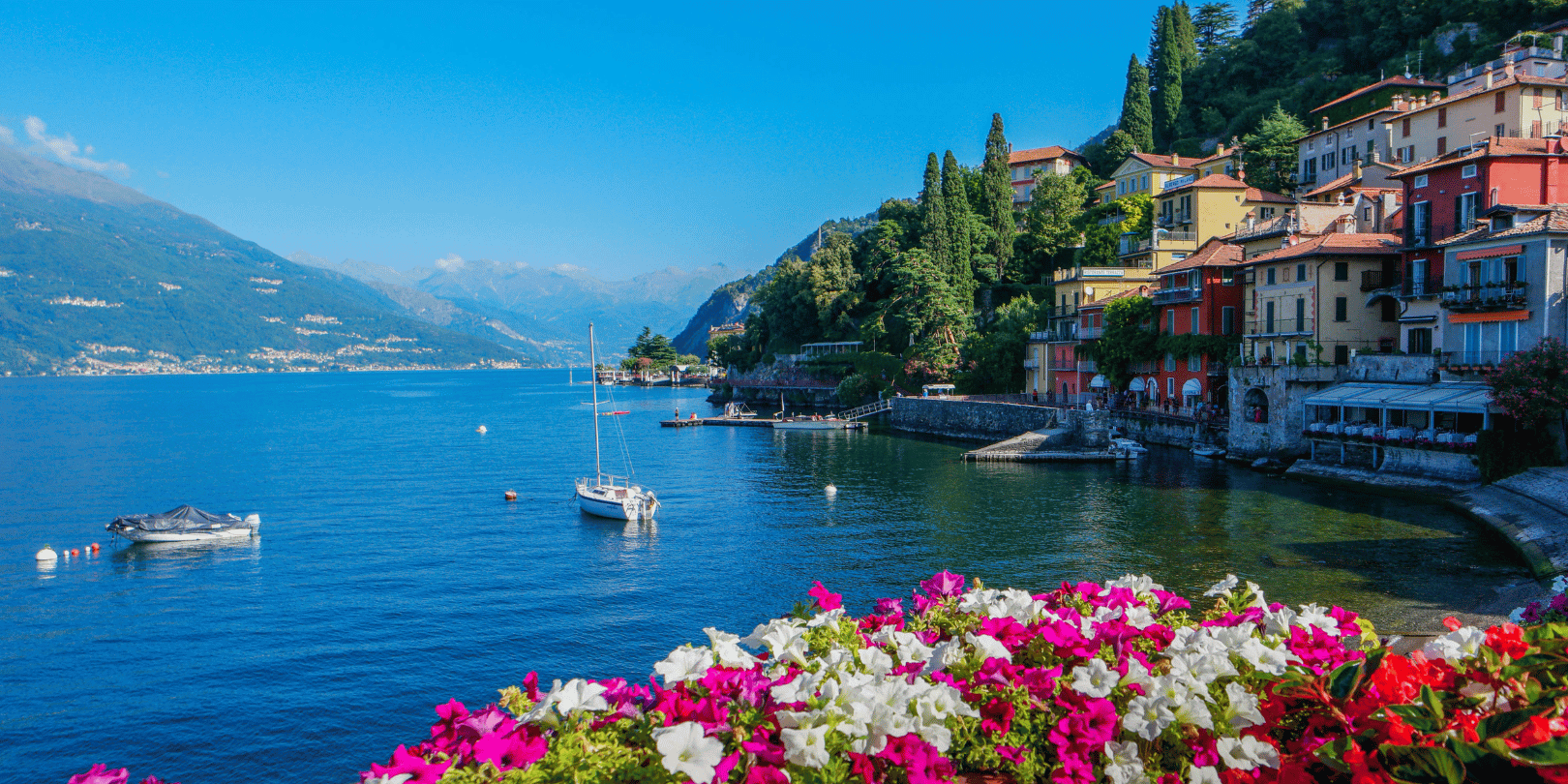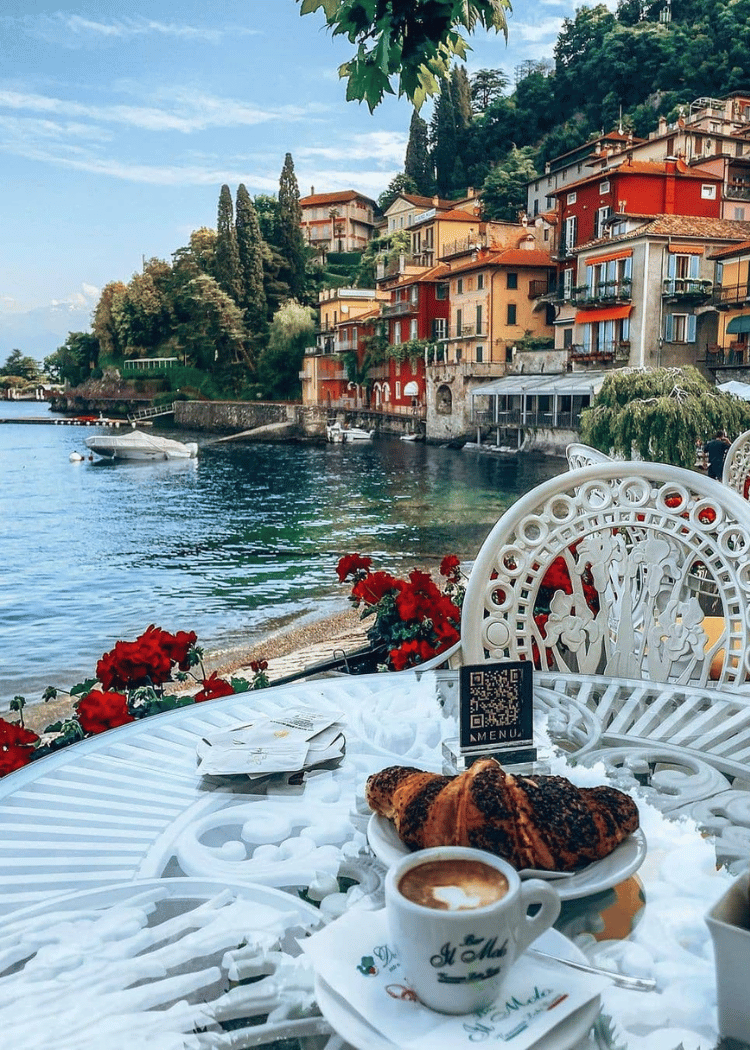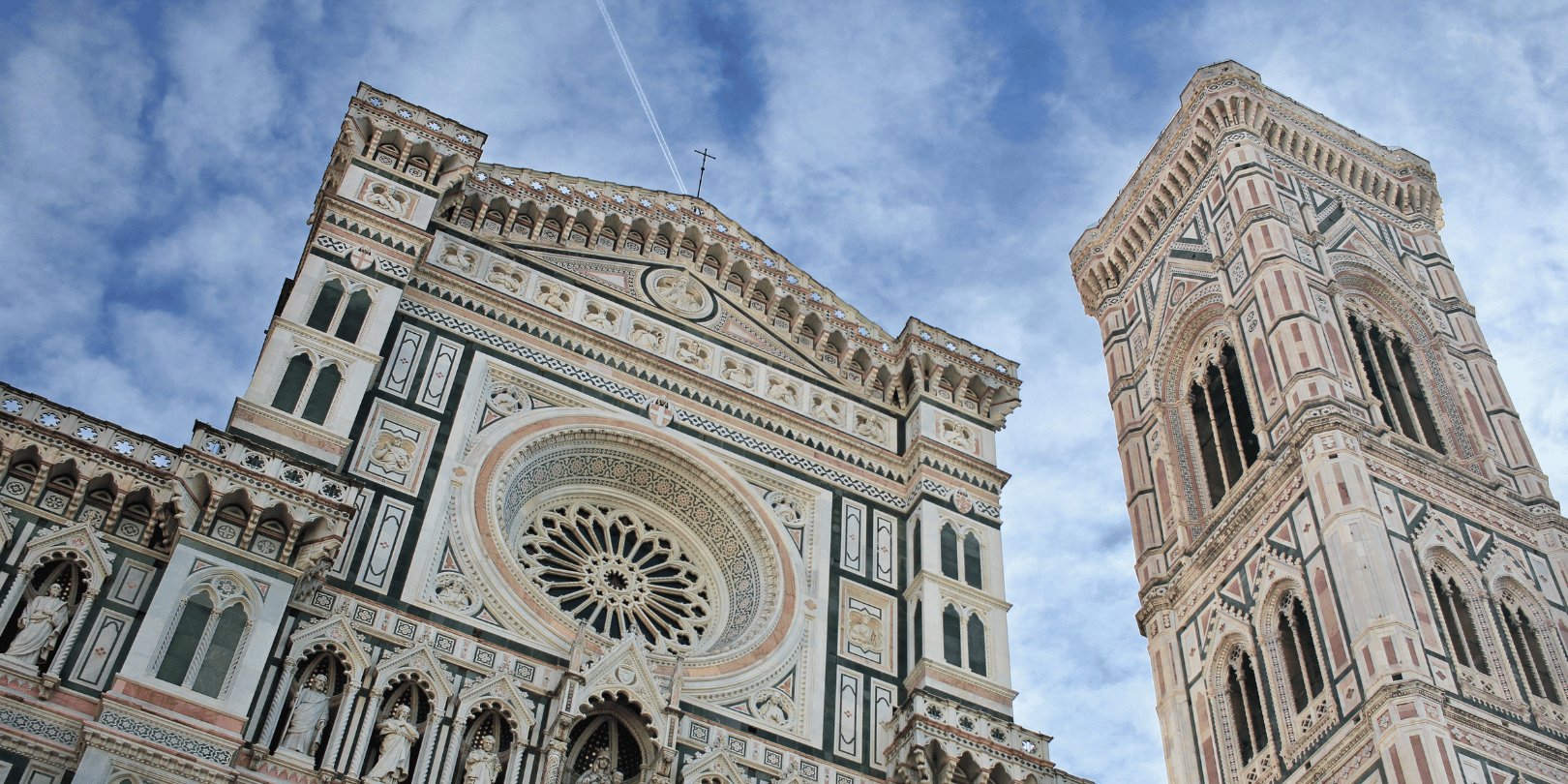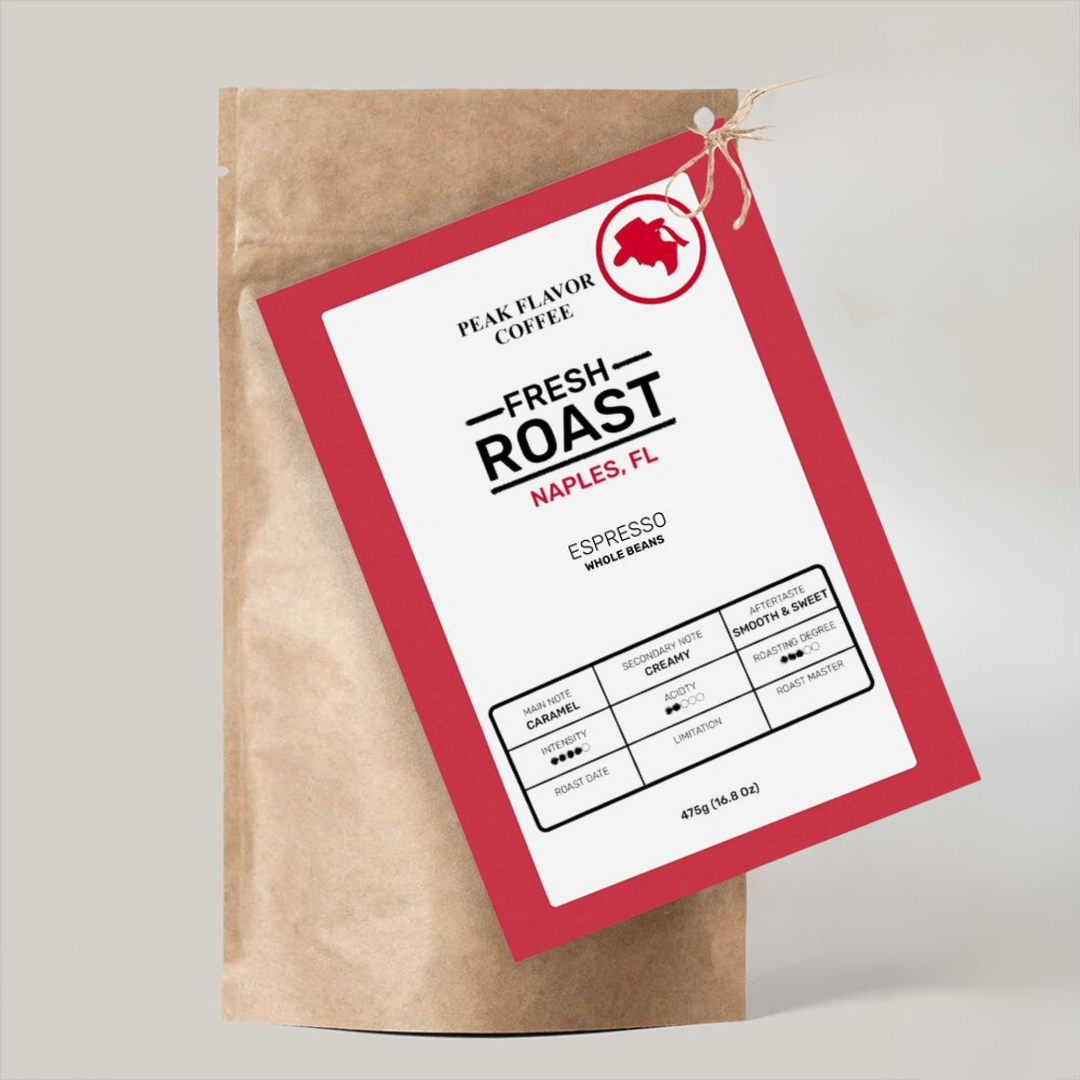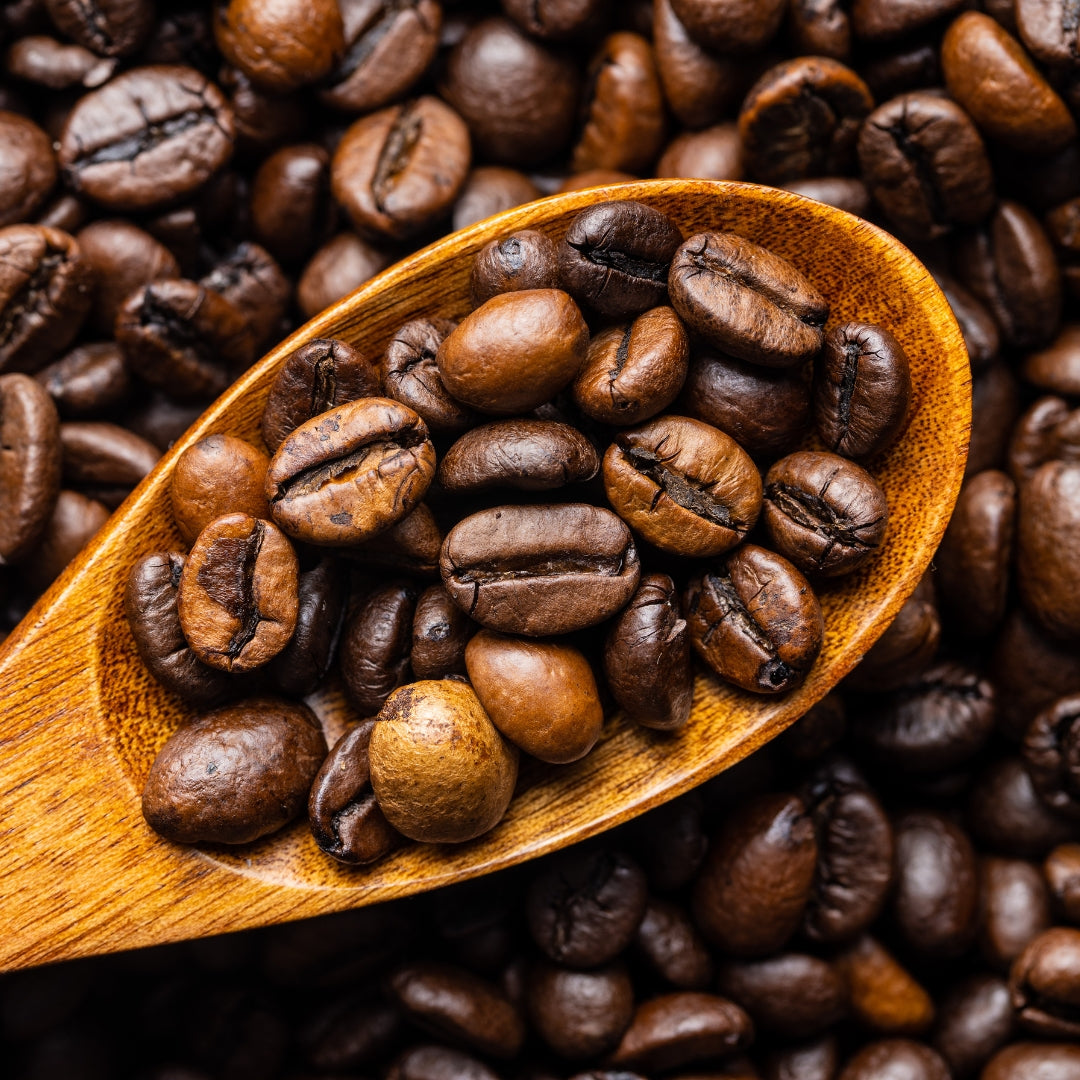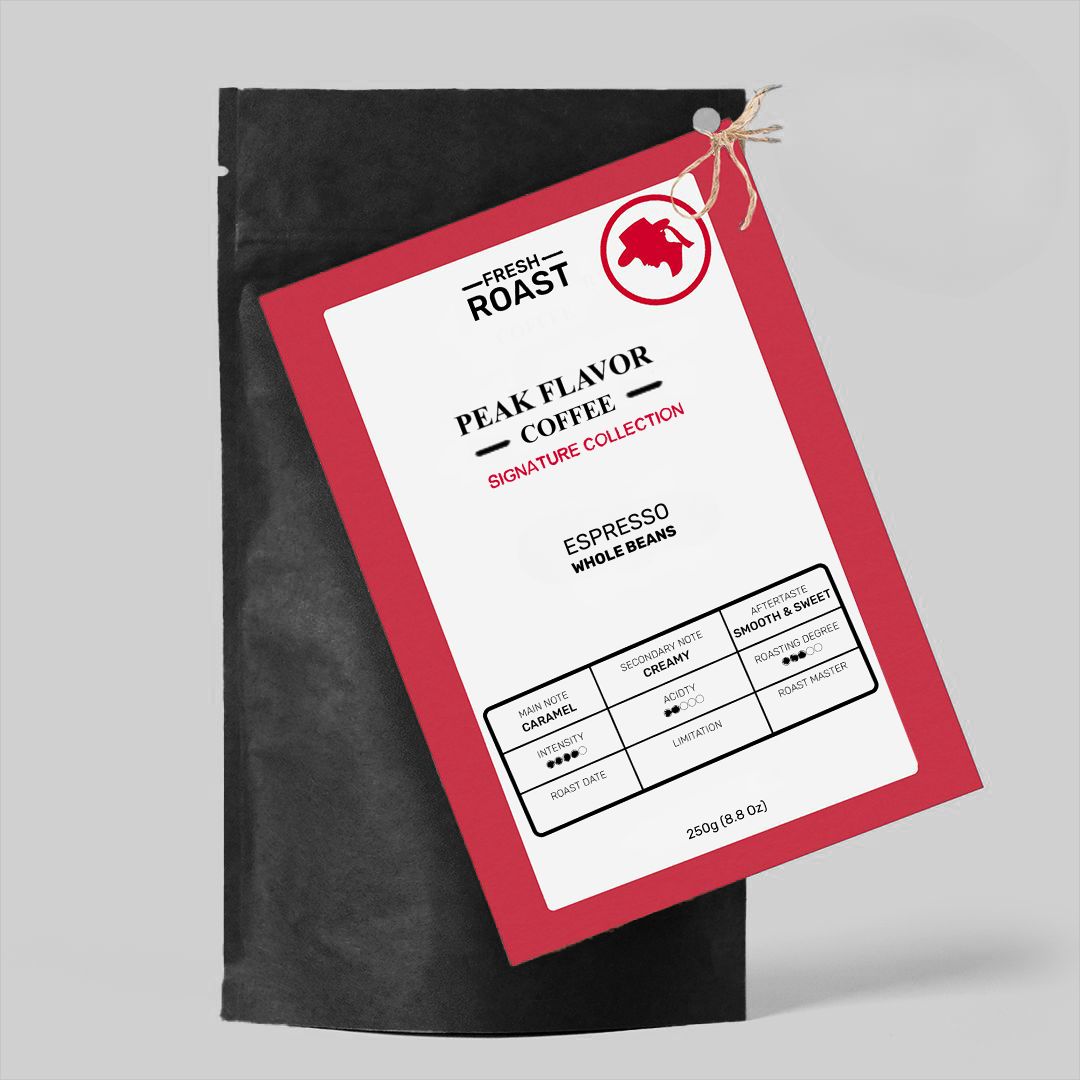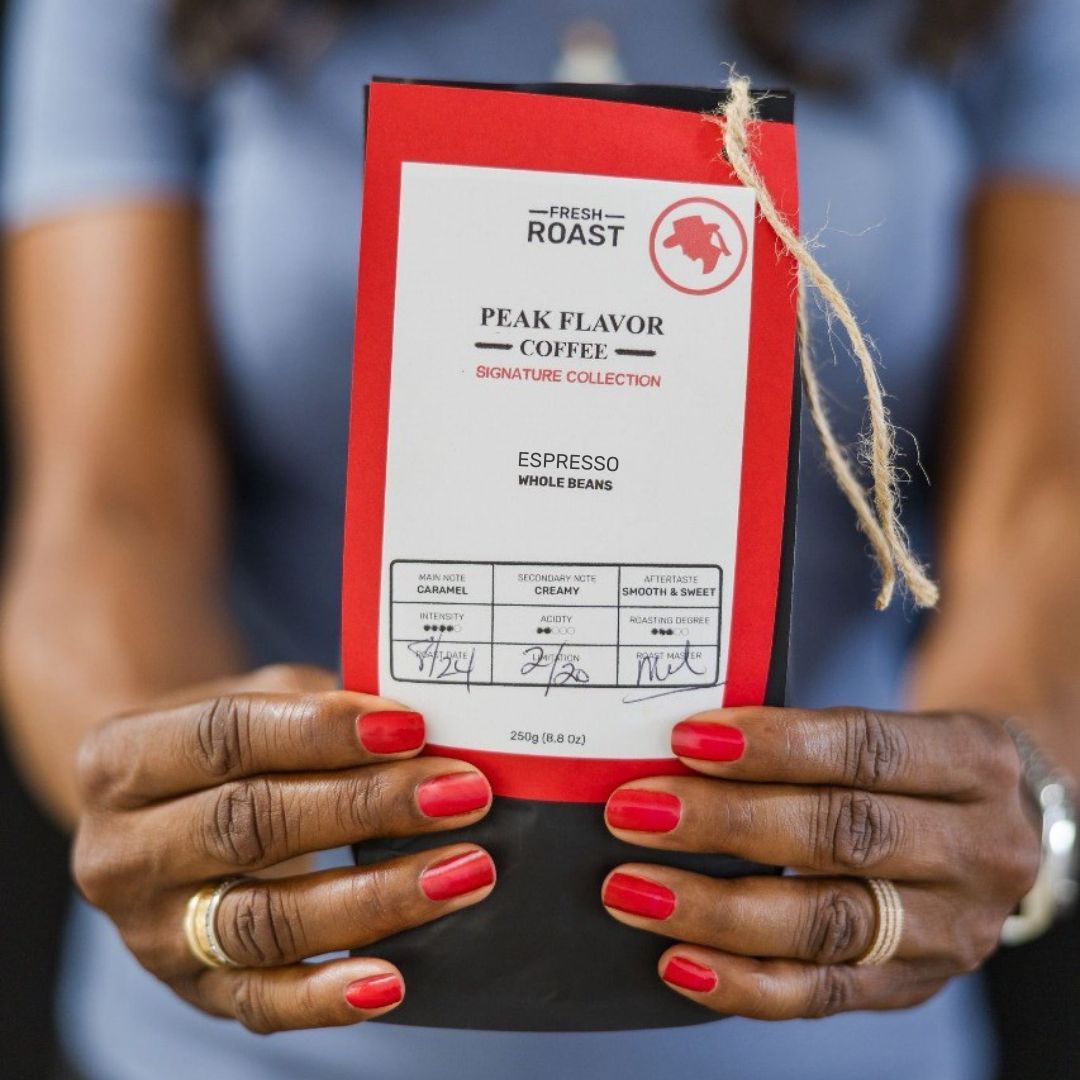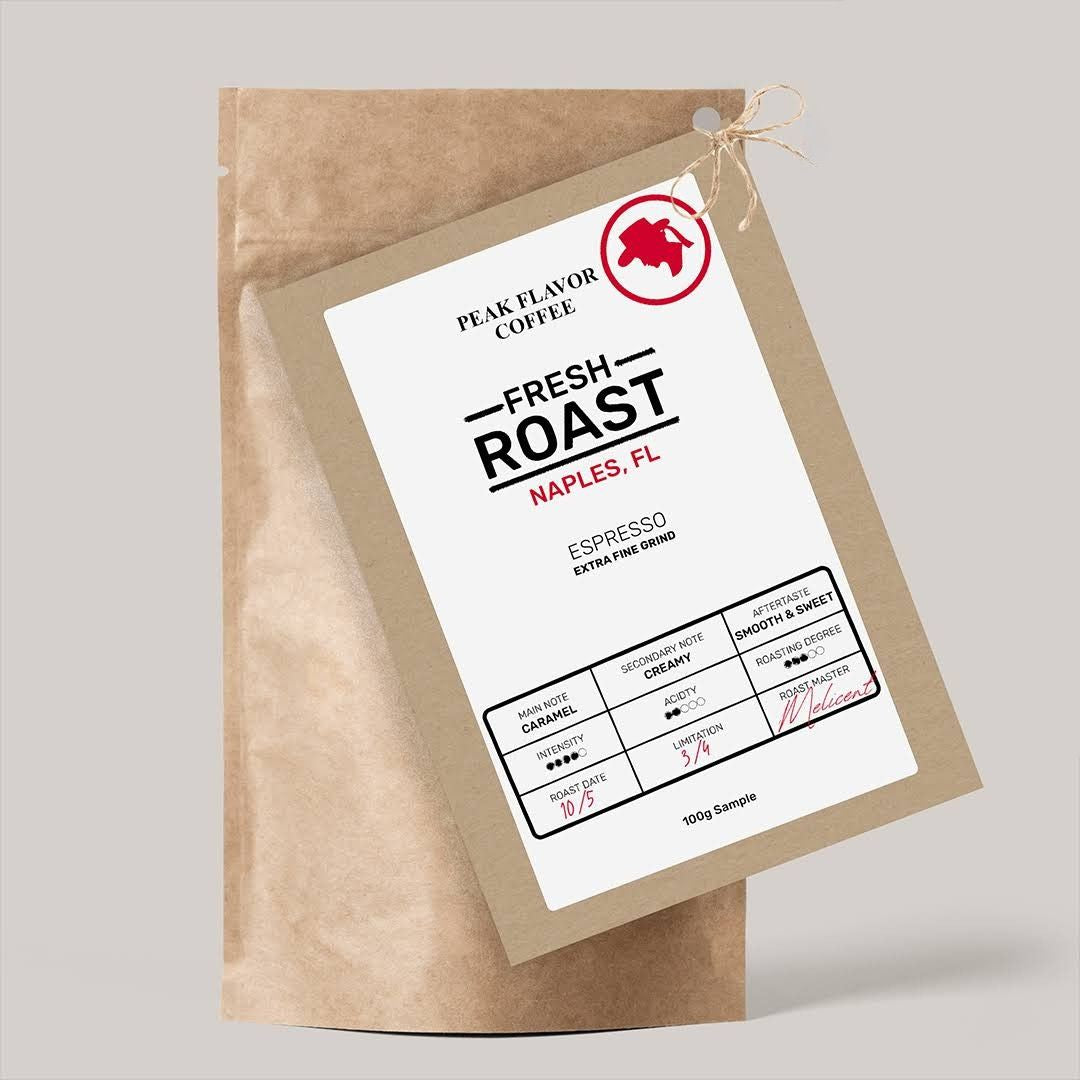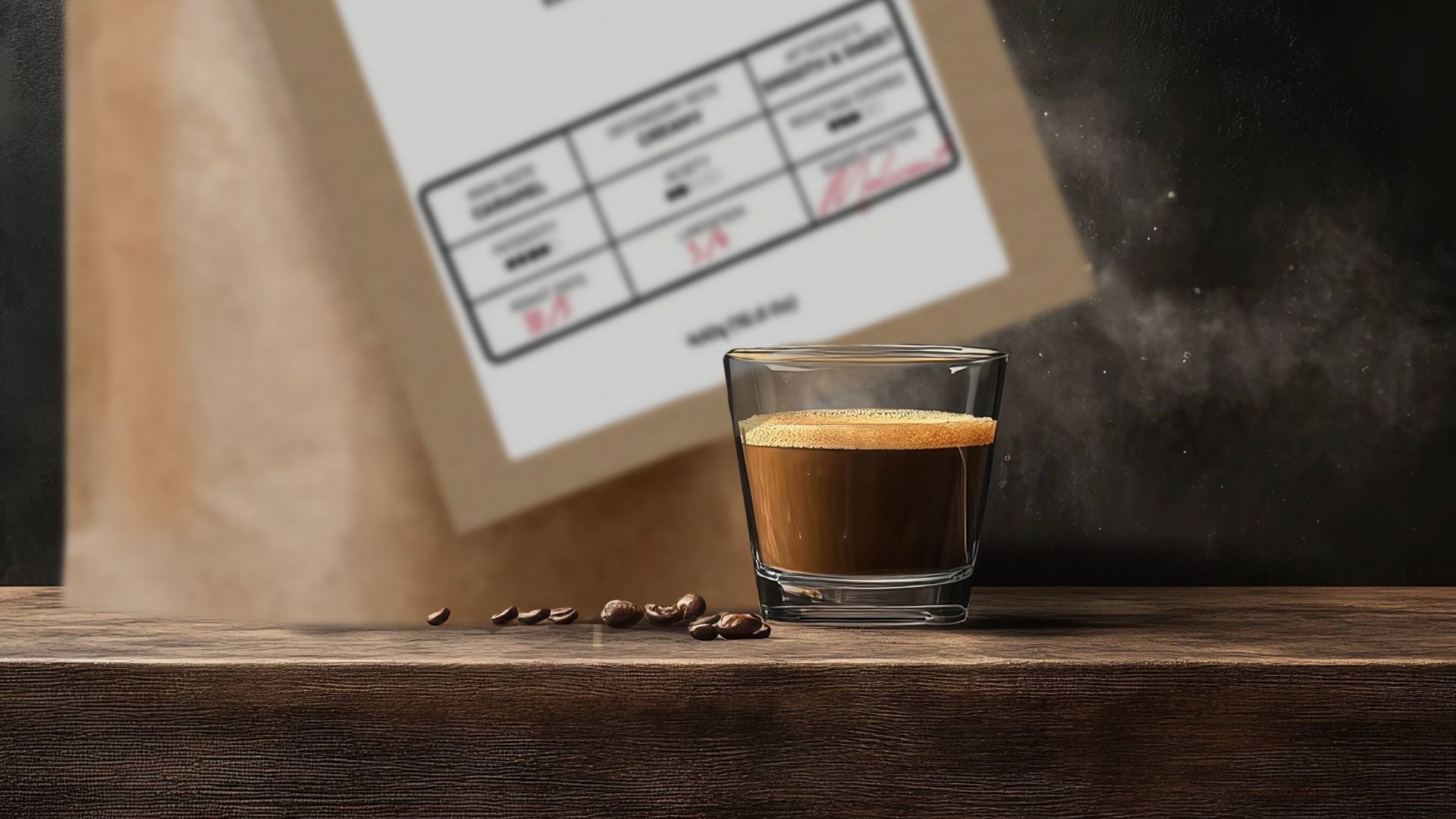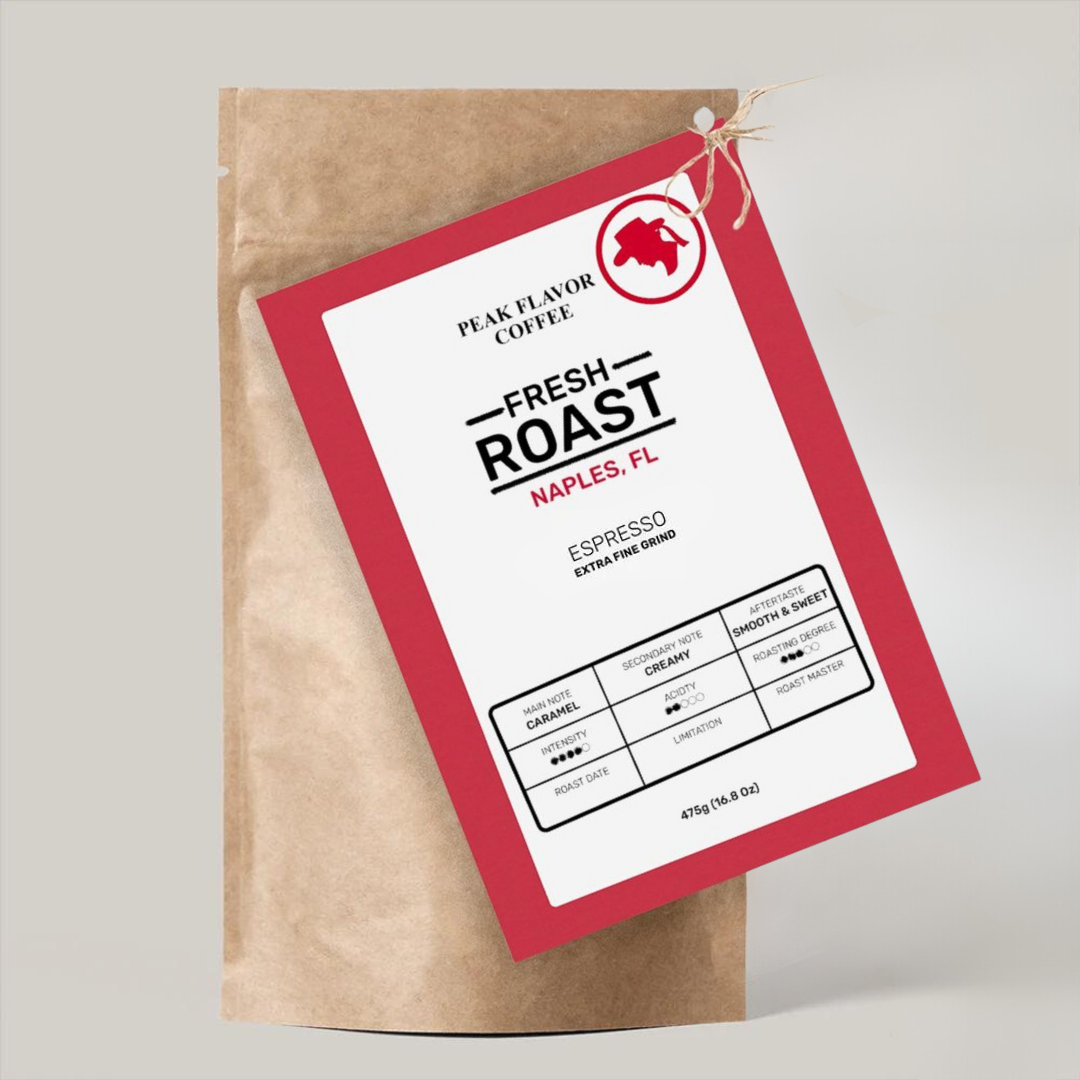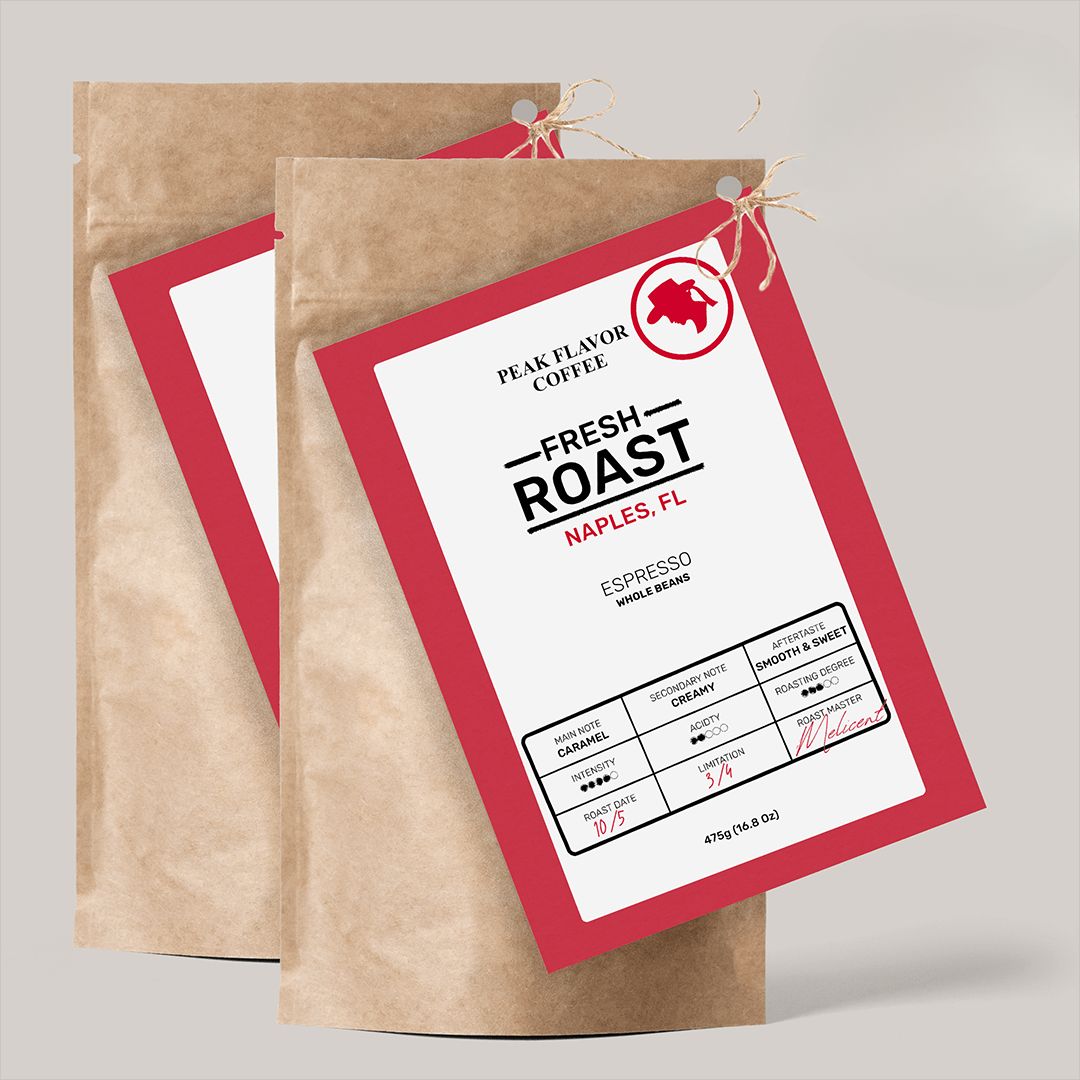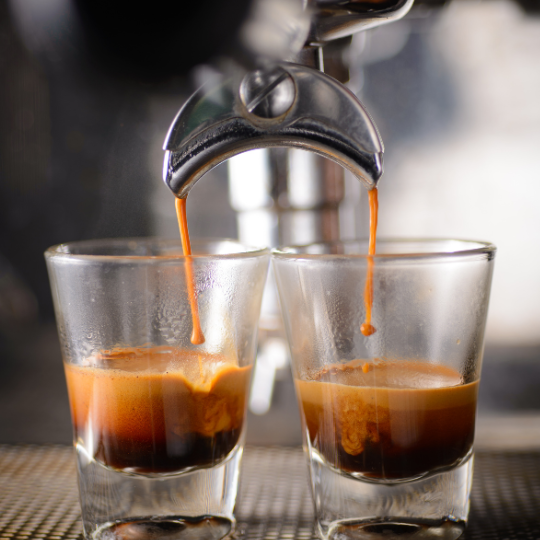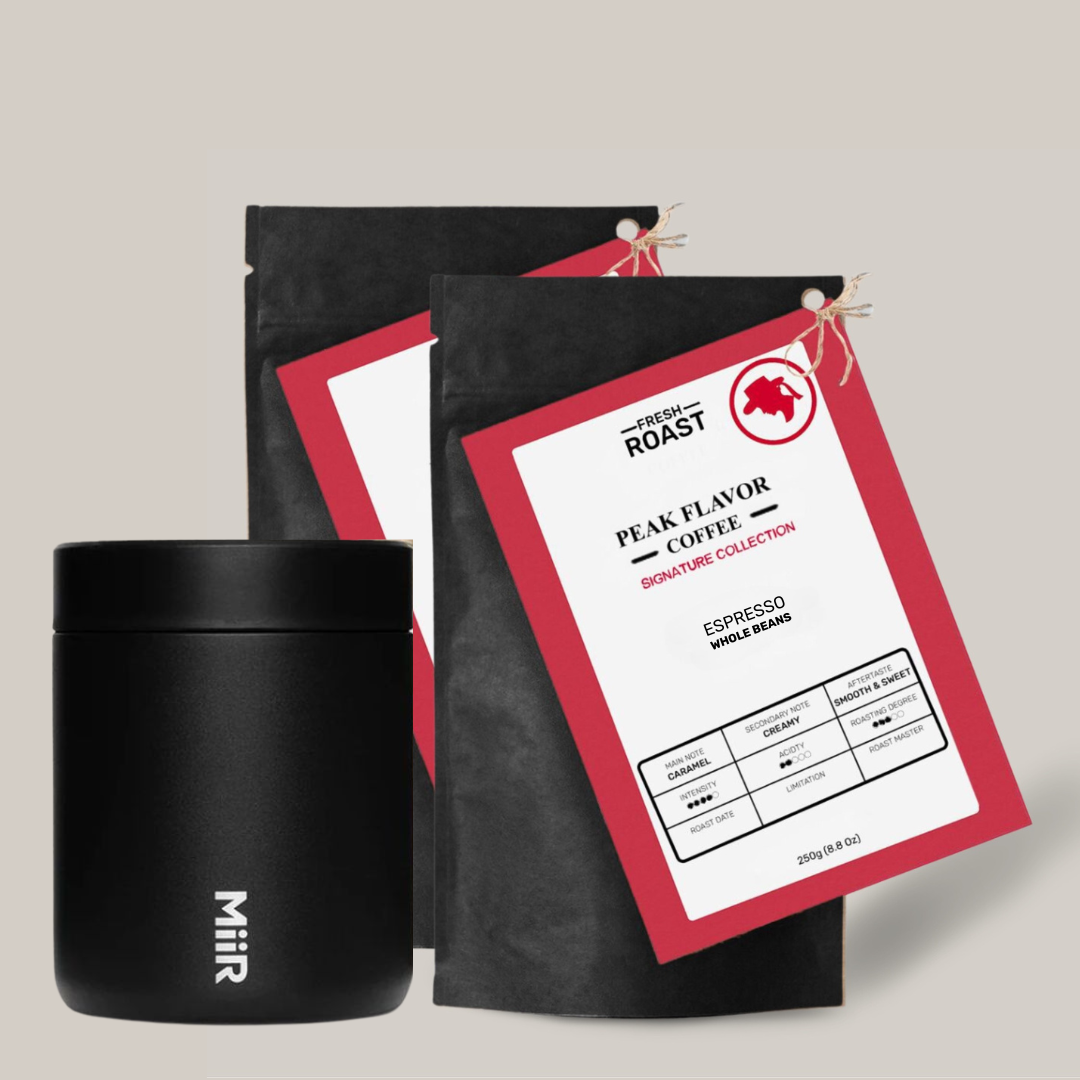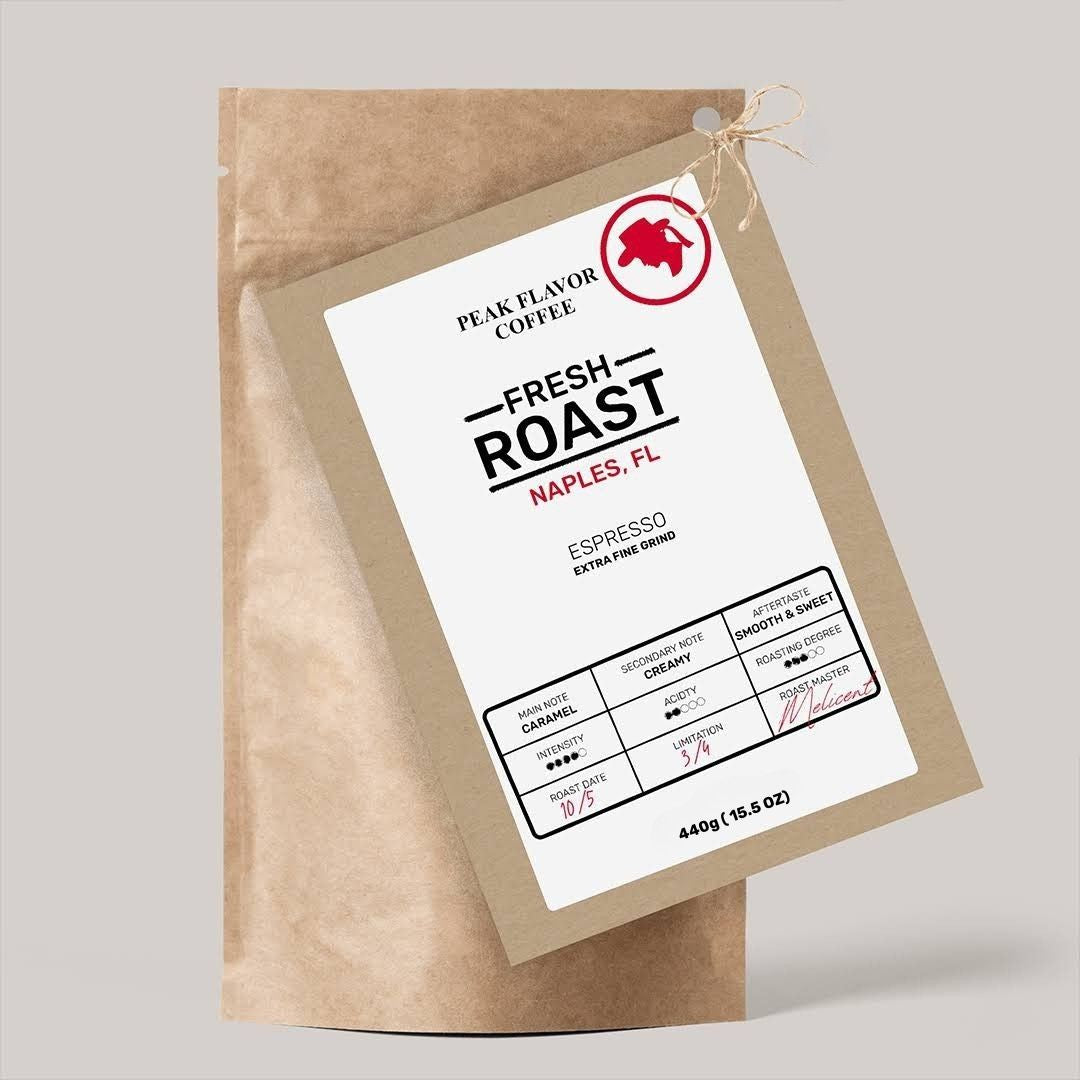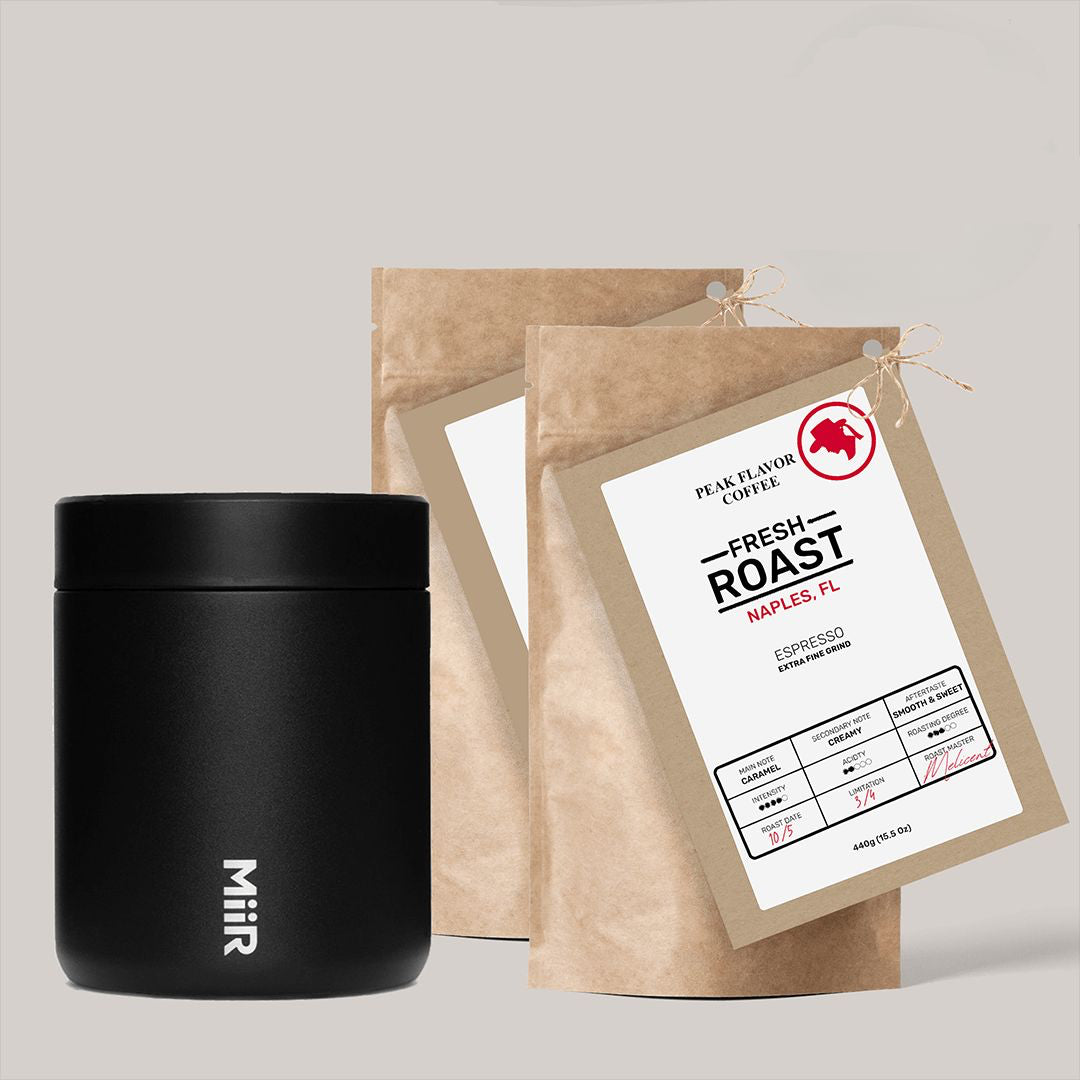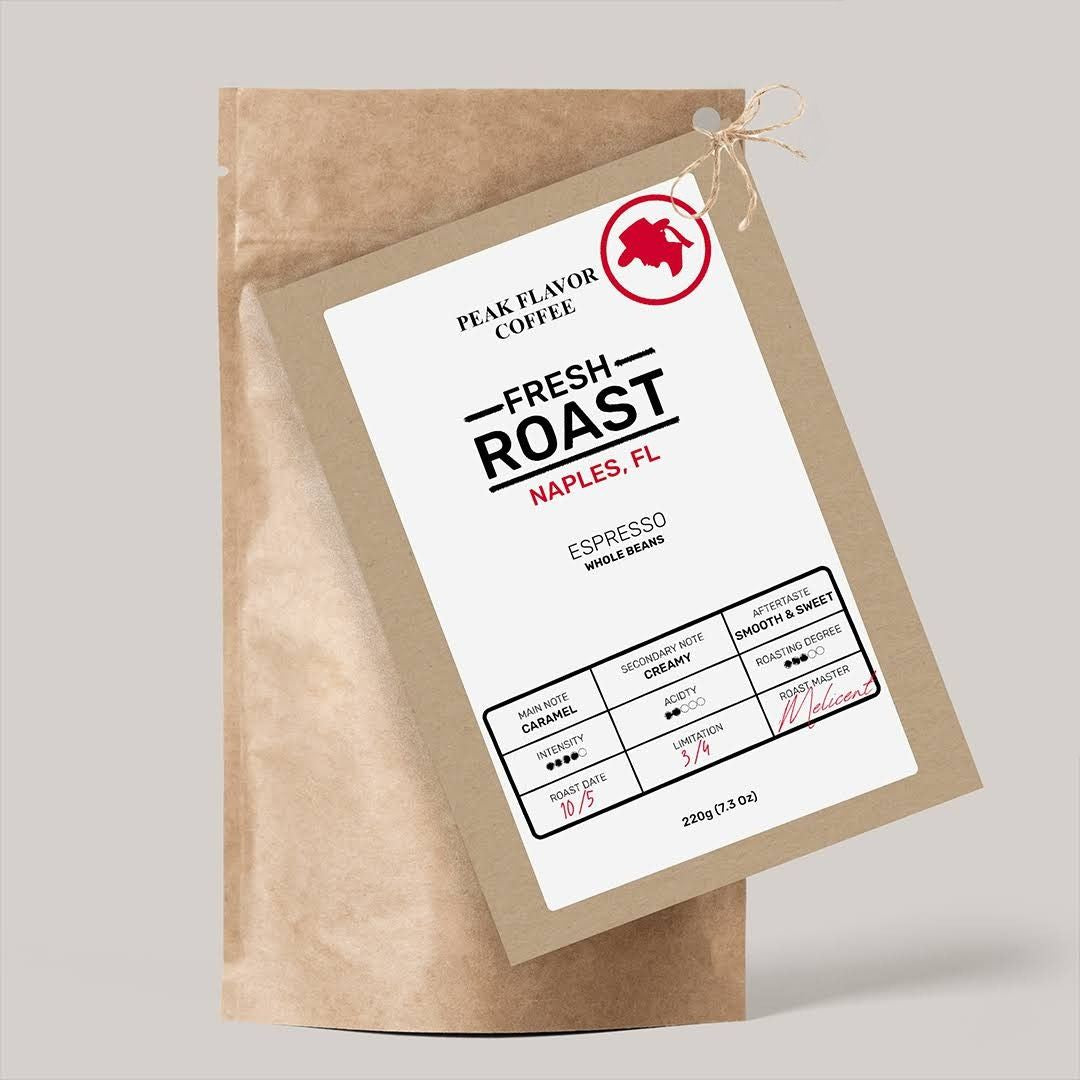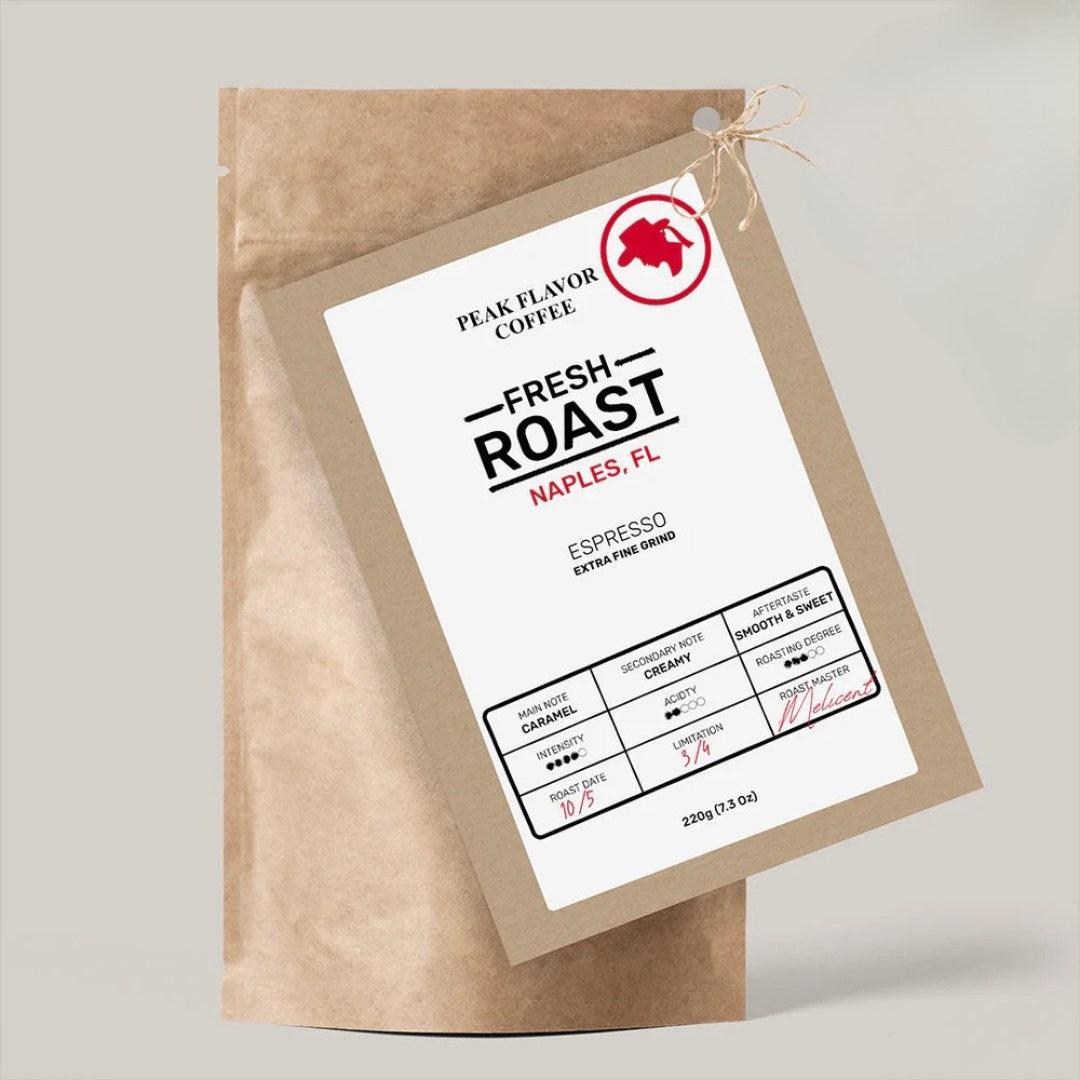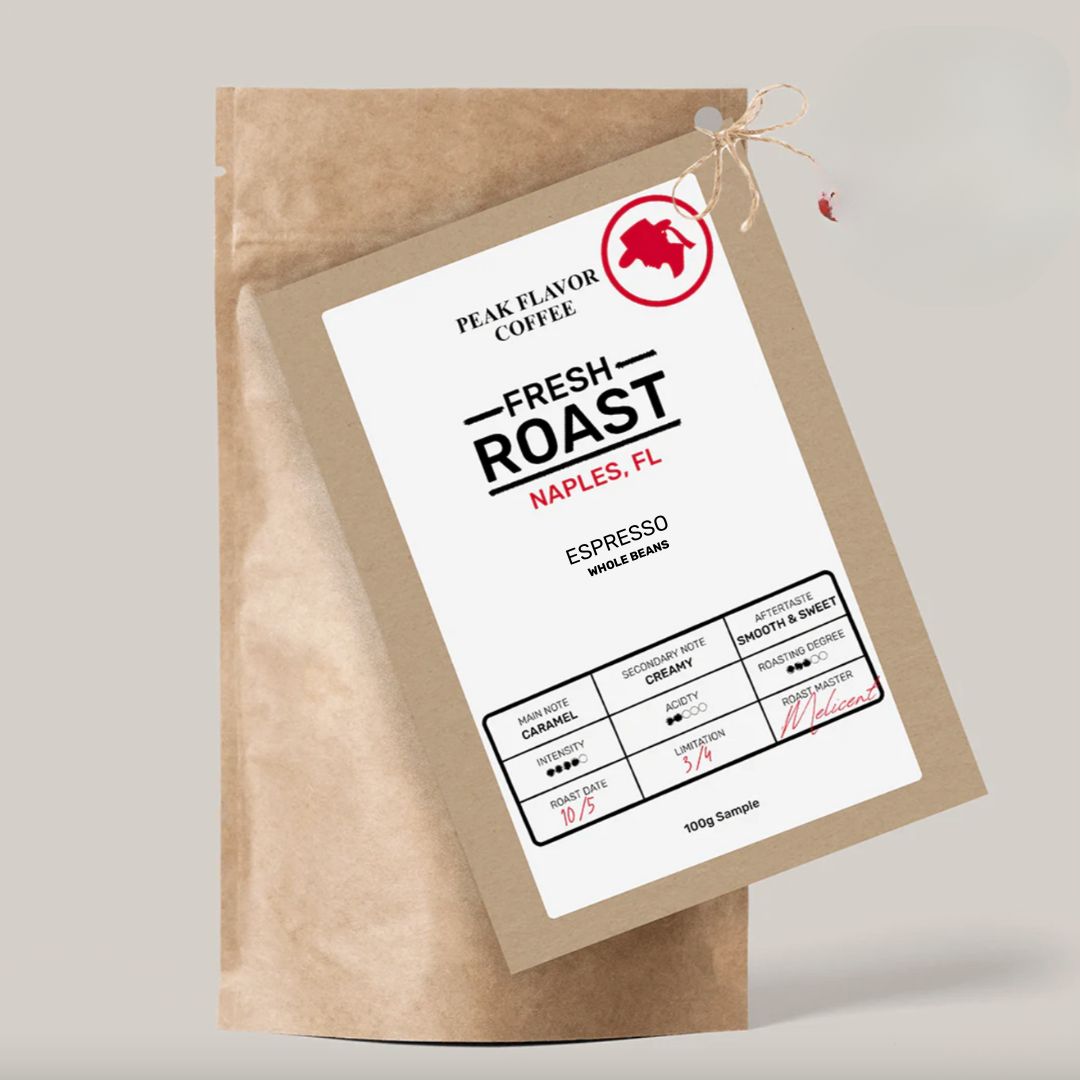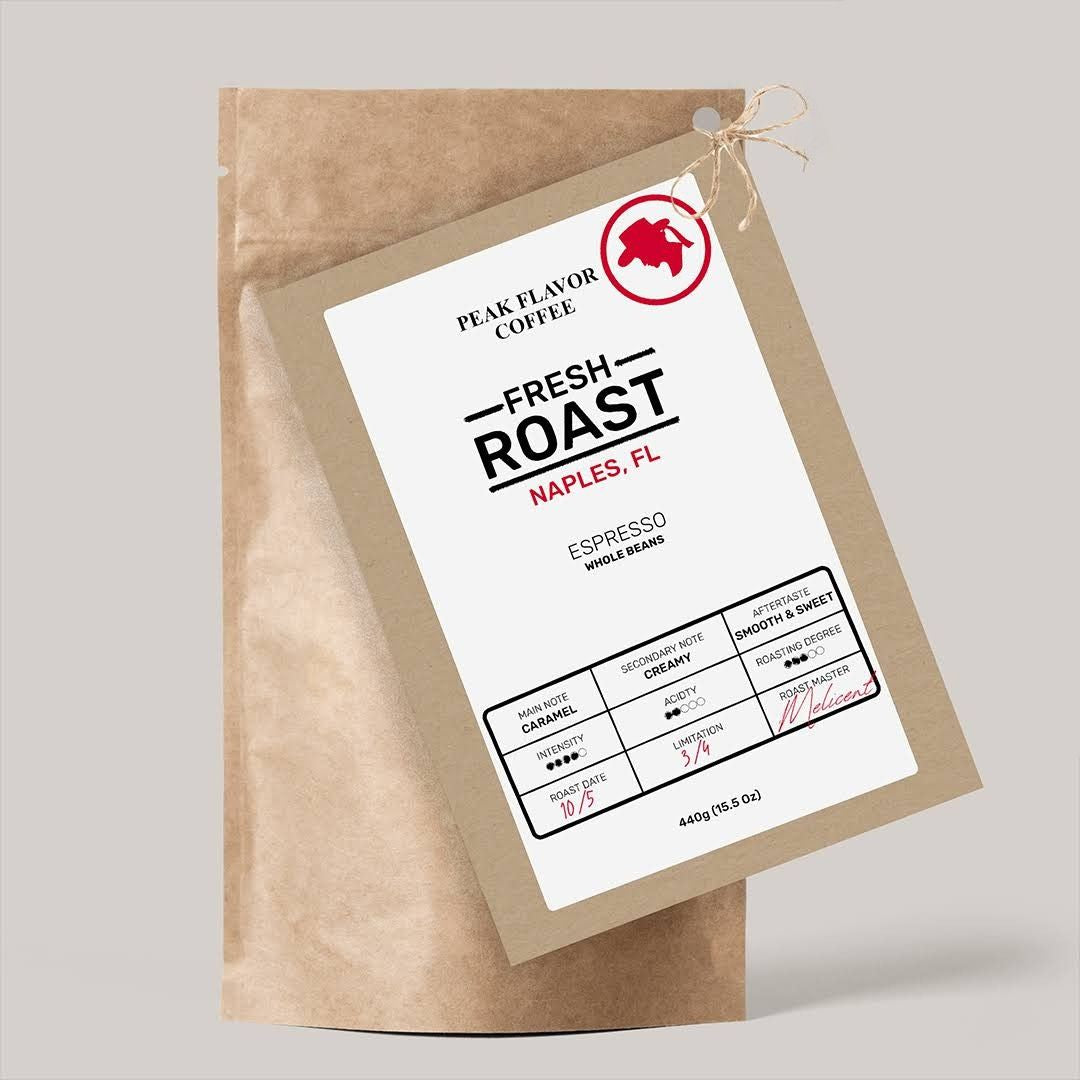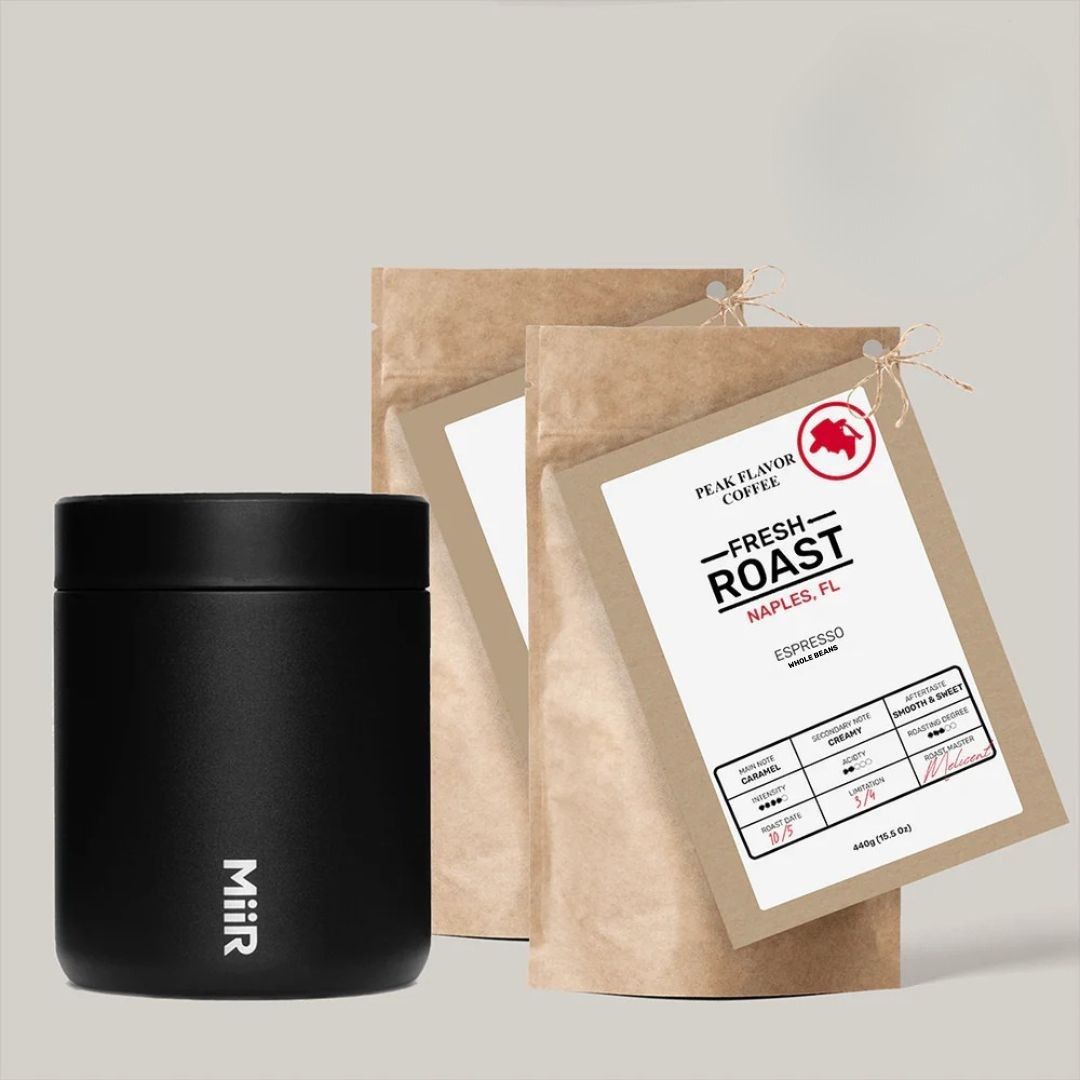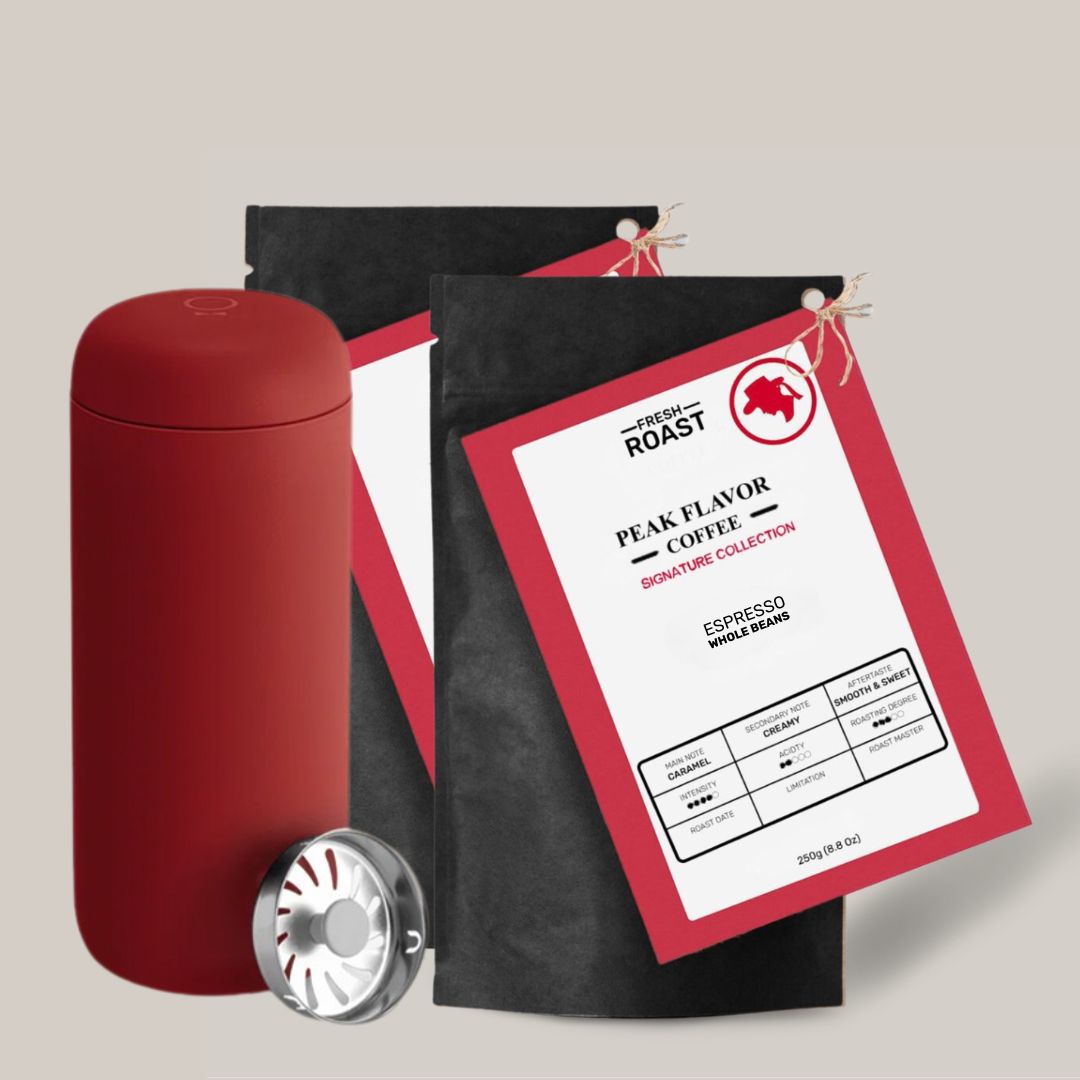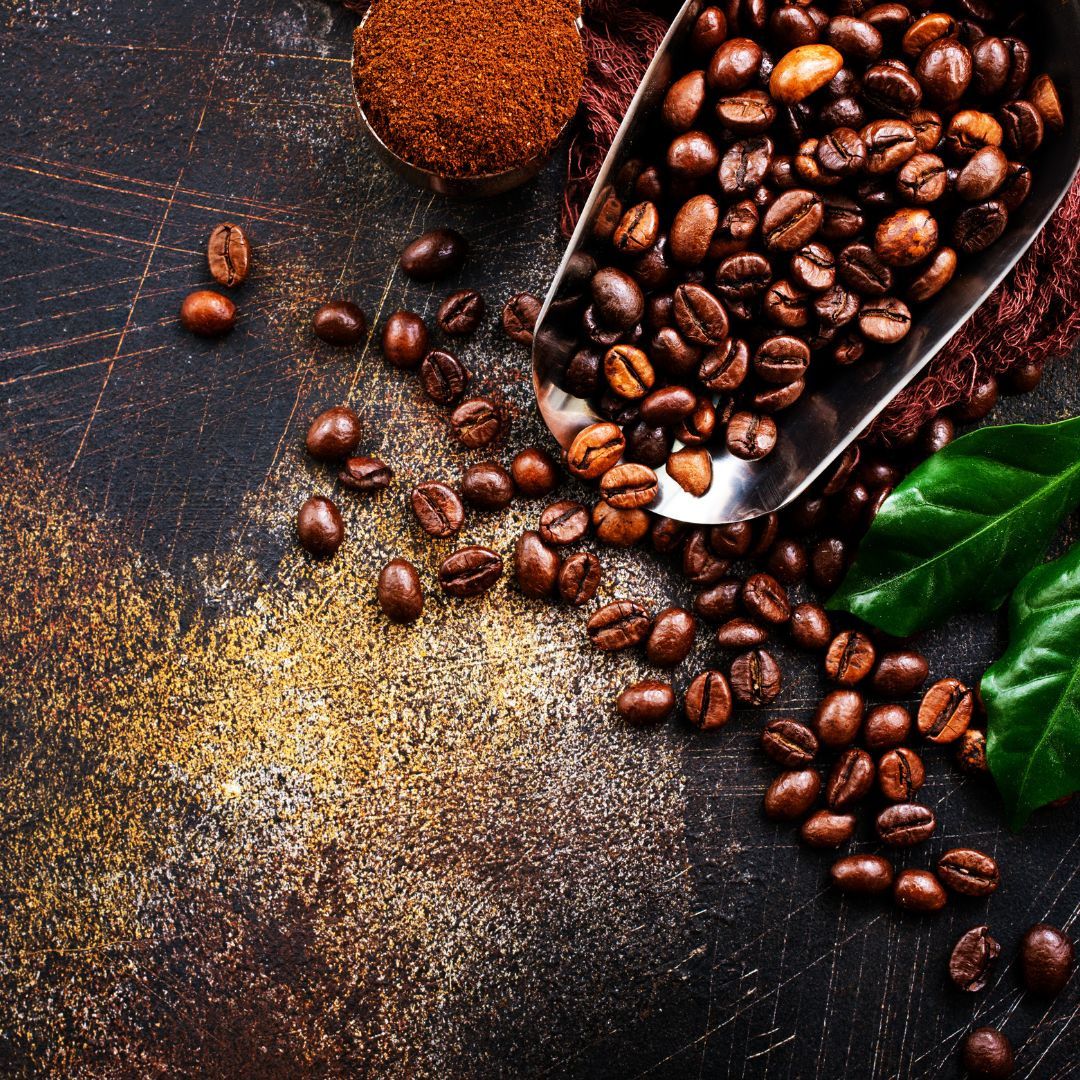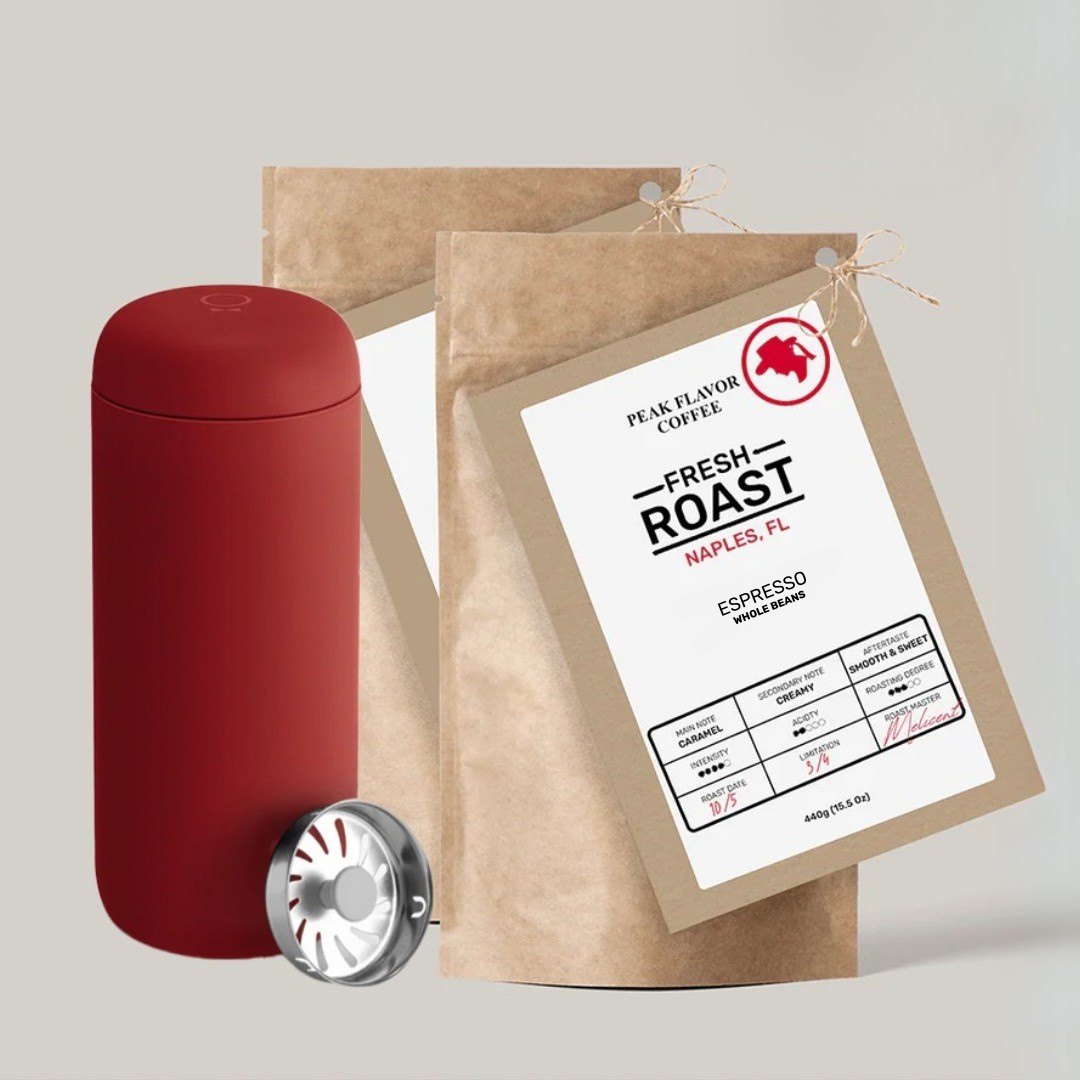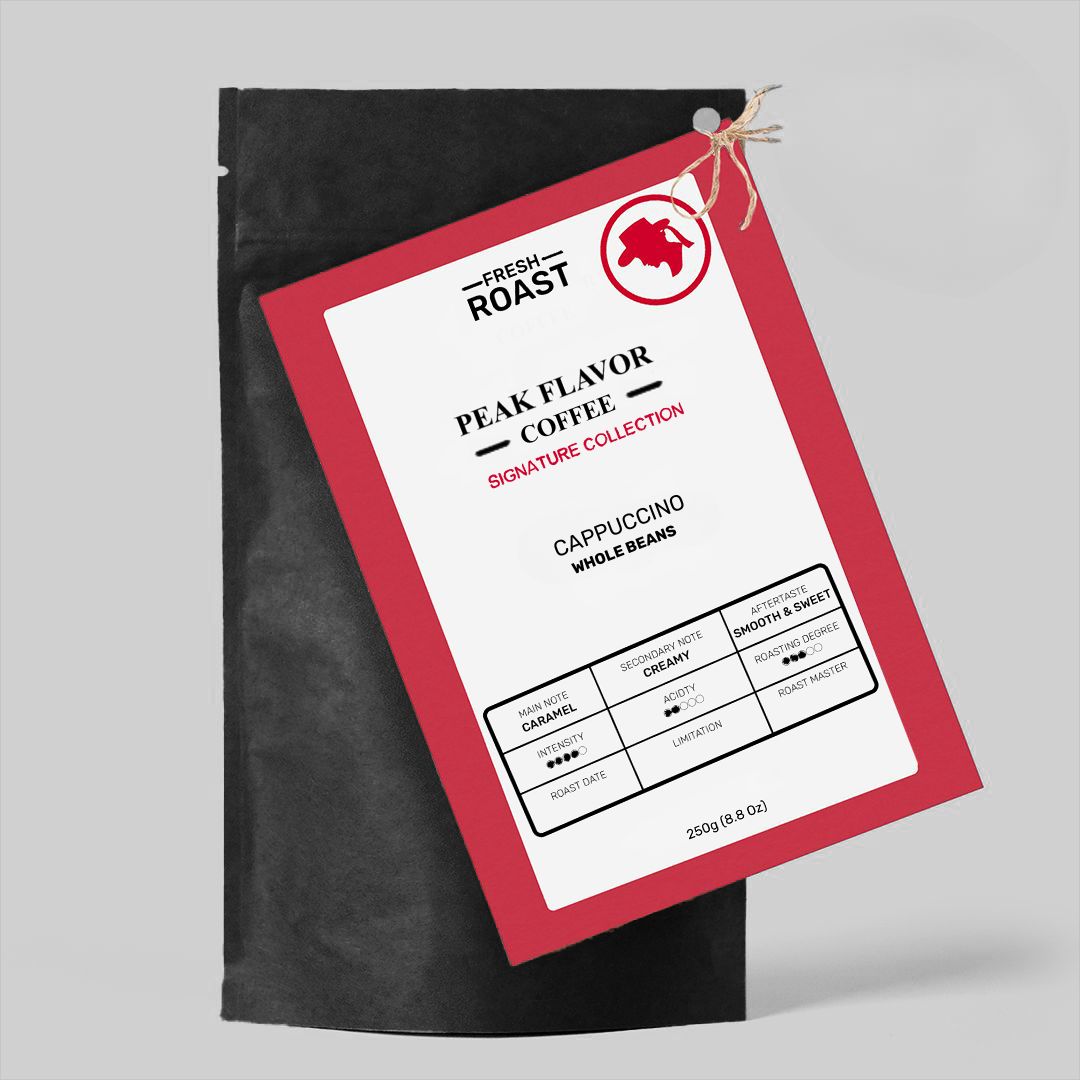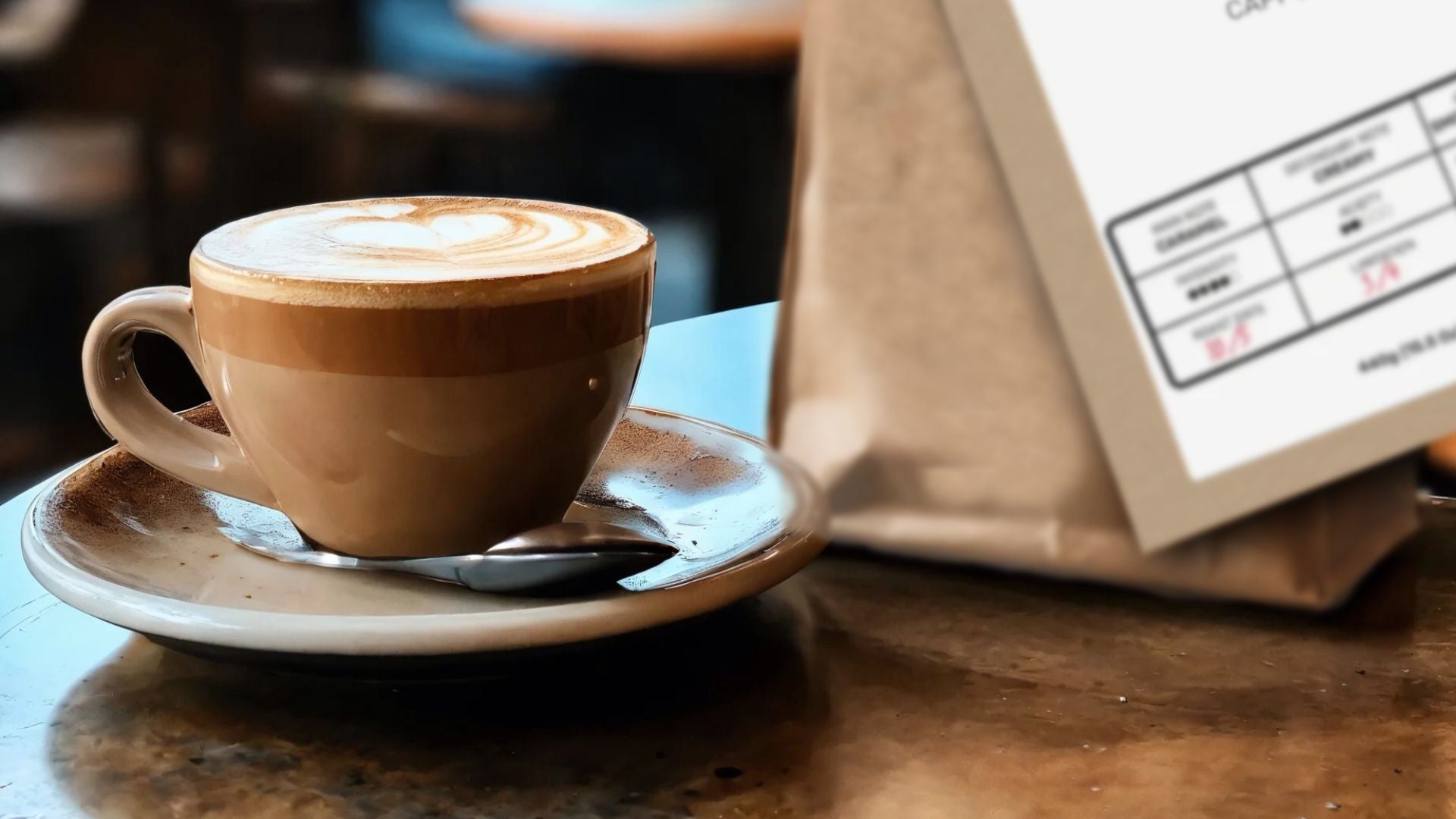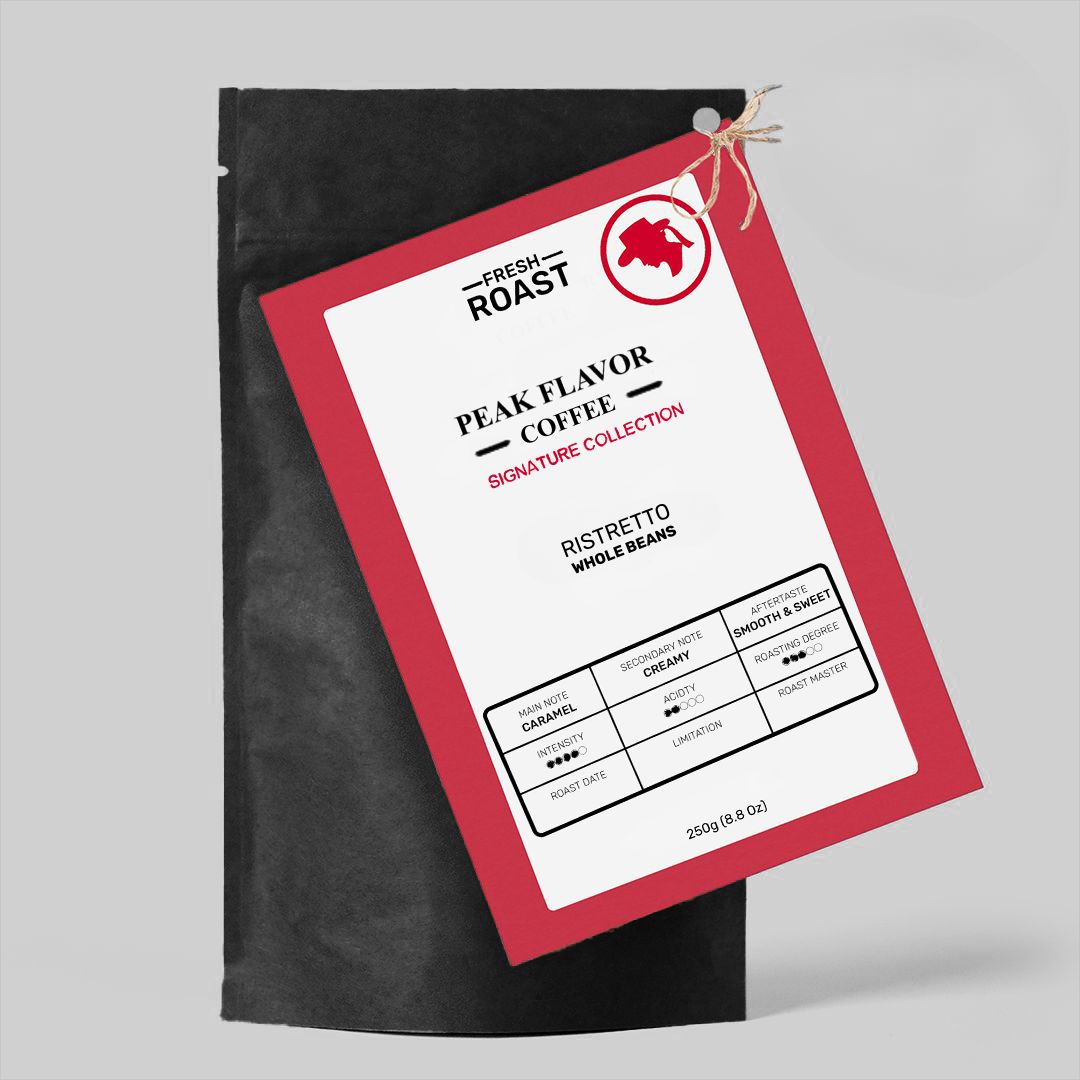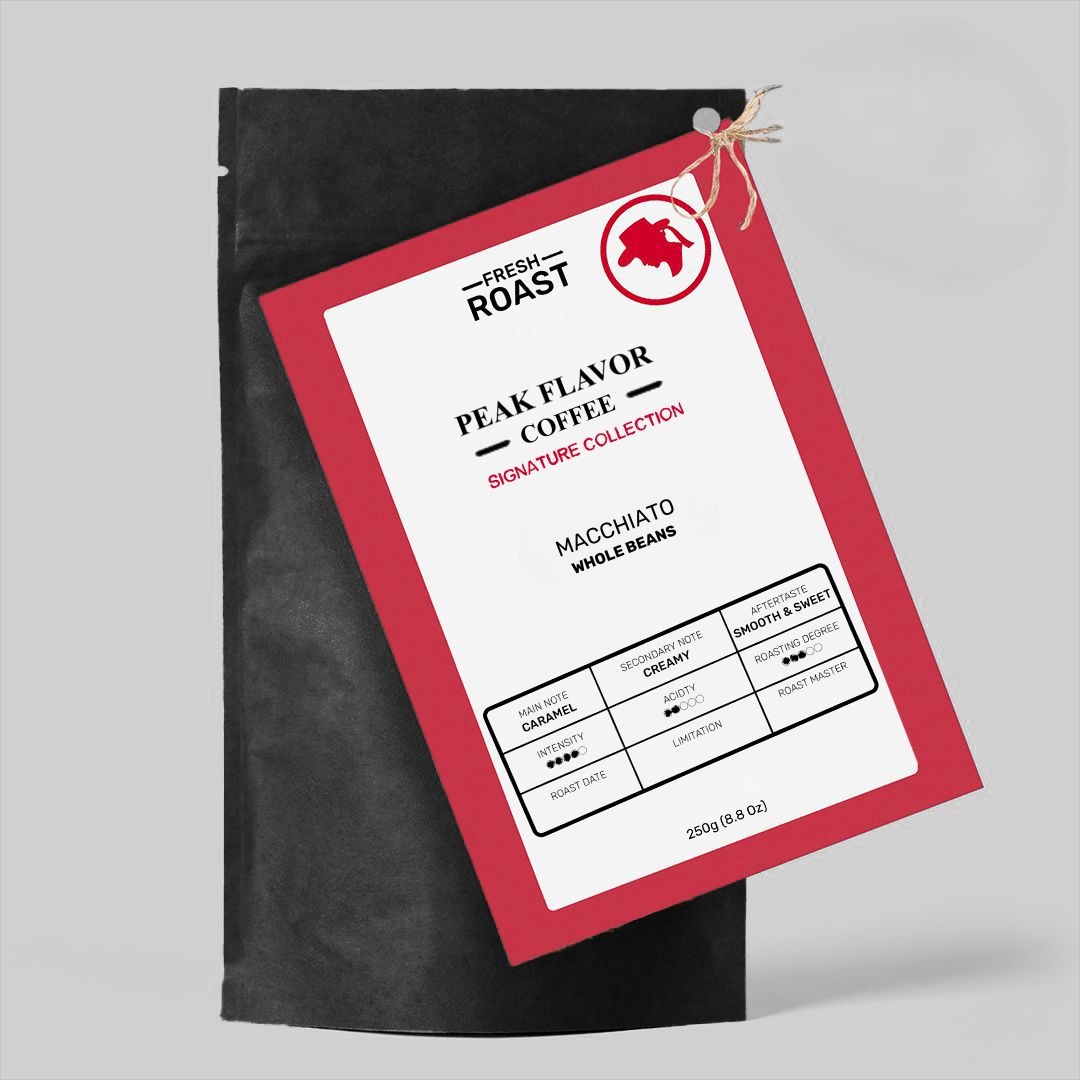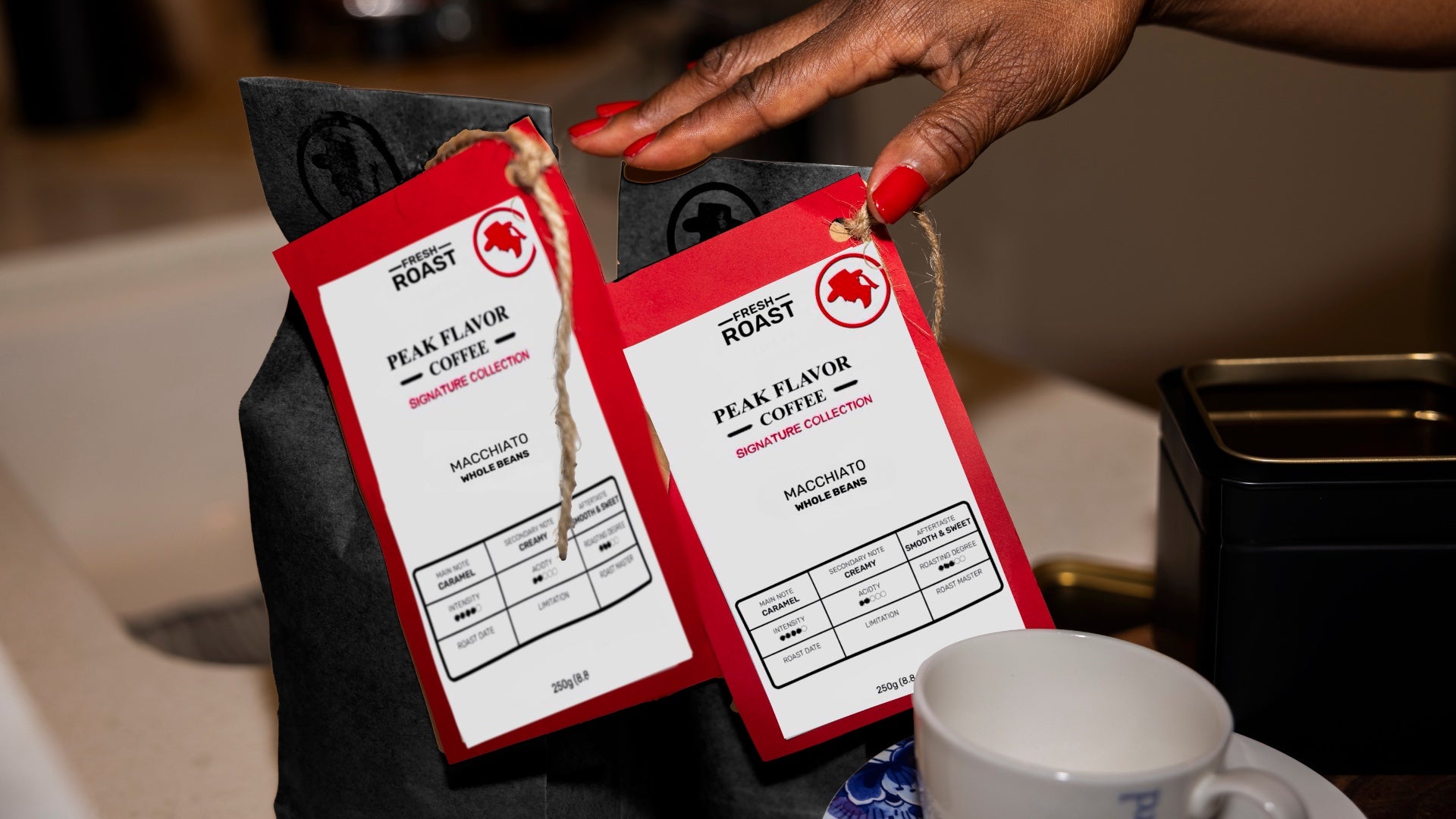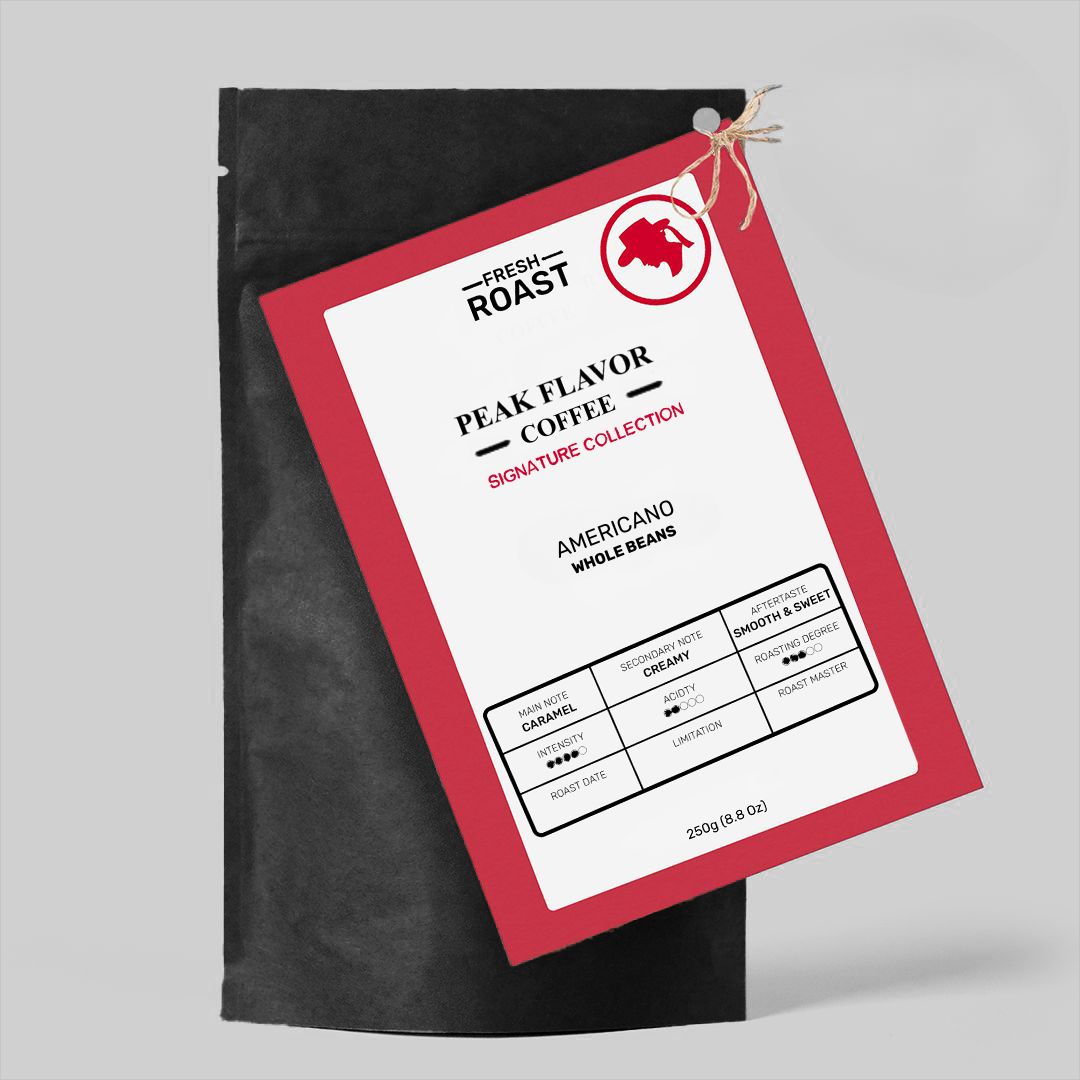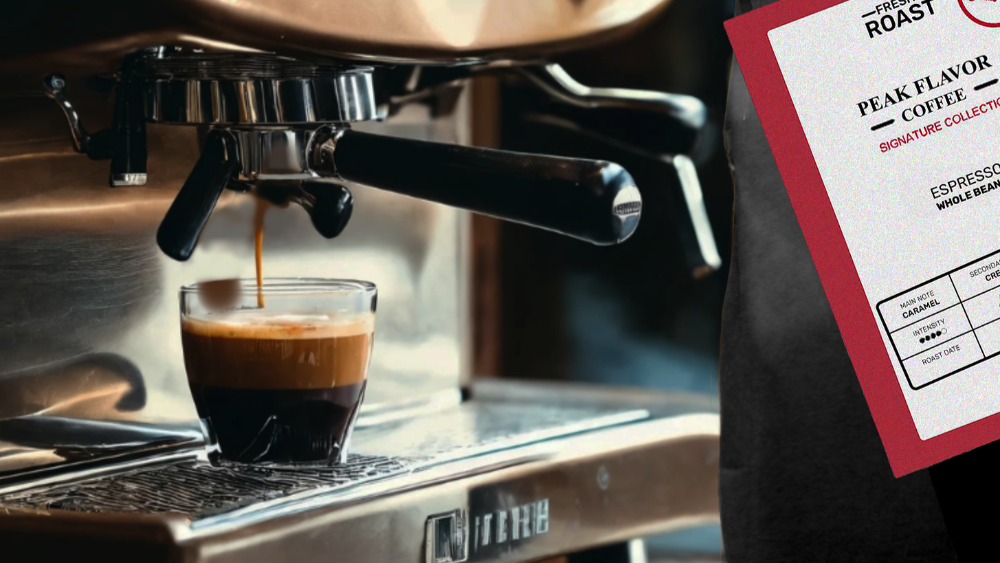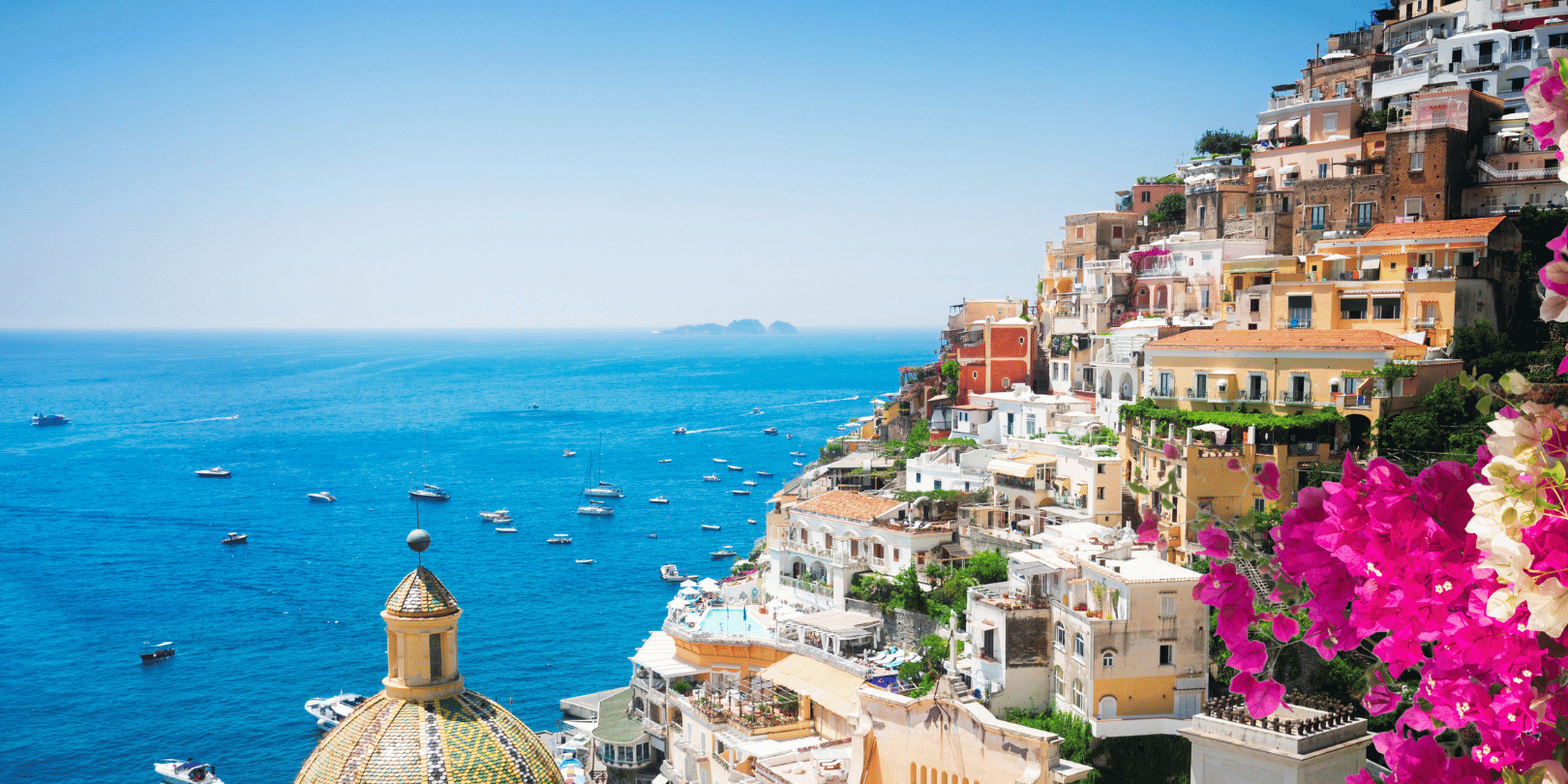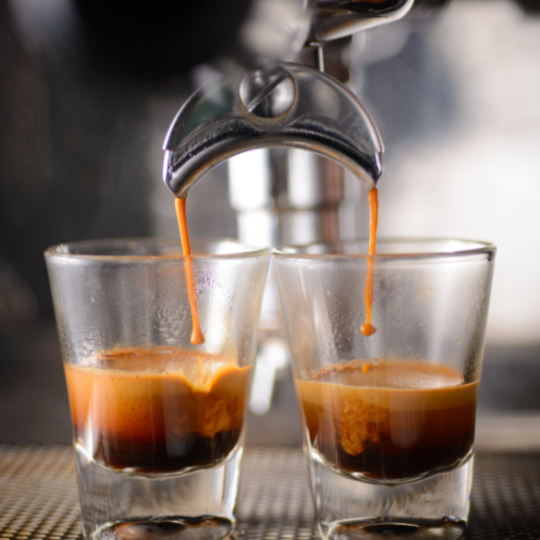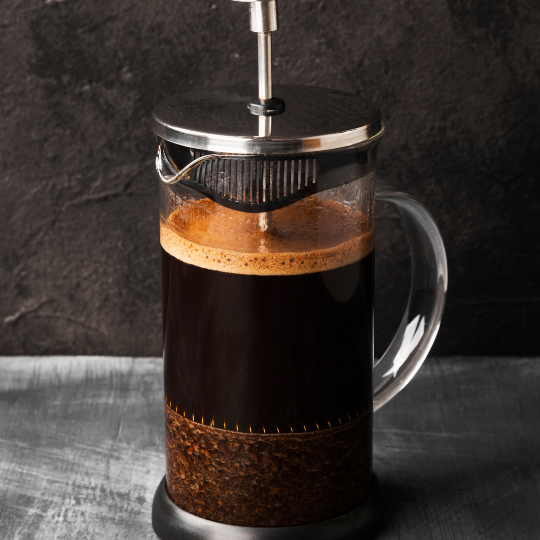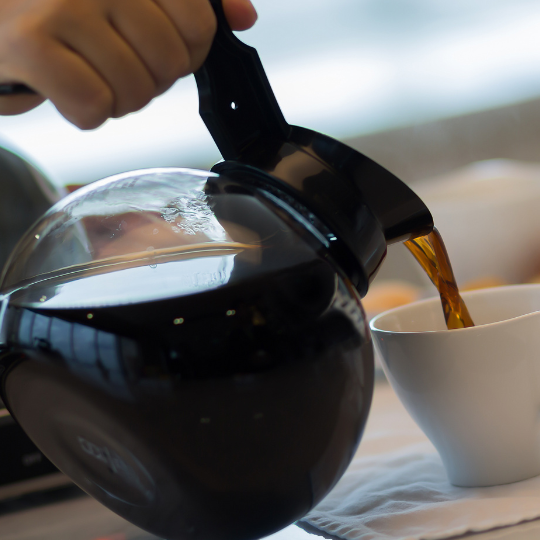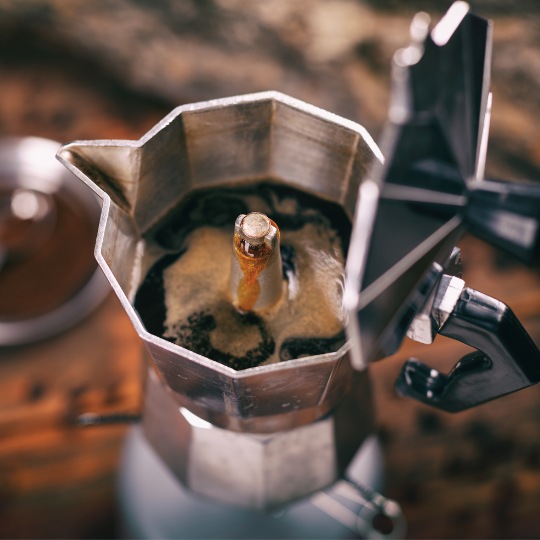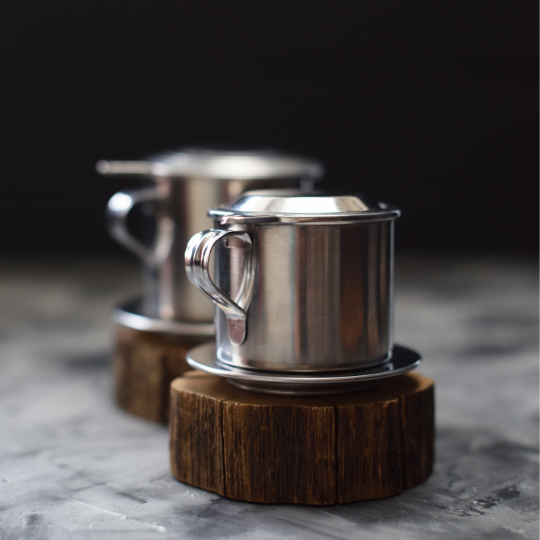Italian Espresso Collection
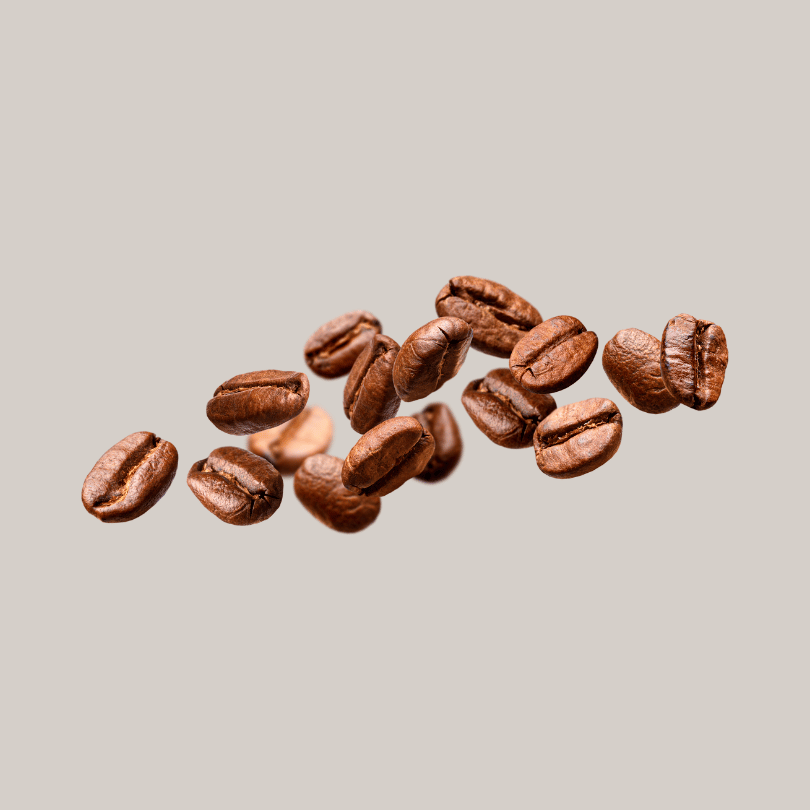
Naturally Sweet Beans
Intense but sweet Italian espresso starts with naturally sweet coffee beans.
We customize our bean blends with naturally sweet coffee beans from the highlands in Brazil, Honduras, and Vietnam, specifically for your espresso machine.
For rich and creamy espresso with abundant crema, we include some high quality Robusta to provide ample natural coffee oils.
Roasting for Natural Caramel Flavor
We slow roast in small batches, to develop caramel, honey and vanilla notes for Italian espresso. We use an Italian roasting style with extended caramelization, so you can automatically brew Italian espresso with natural caramel flavor.
Roasting for Italian espresso requires a little more patience and attention to detail, but the result is the pinnacle of espresso quality.
As a result of designing the roast for your espresso machine, you can brew Italian espresso with ease.

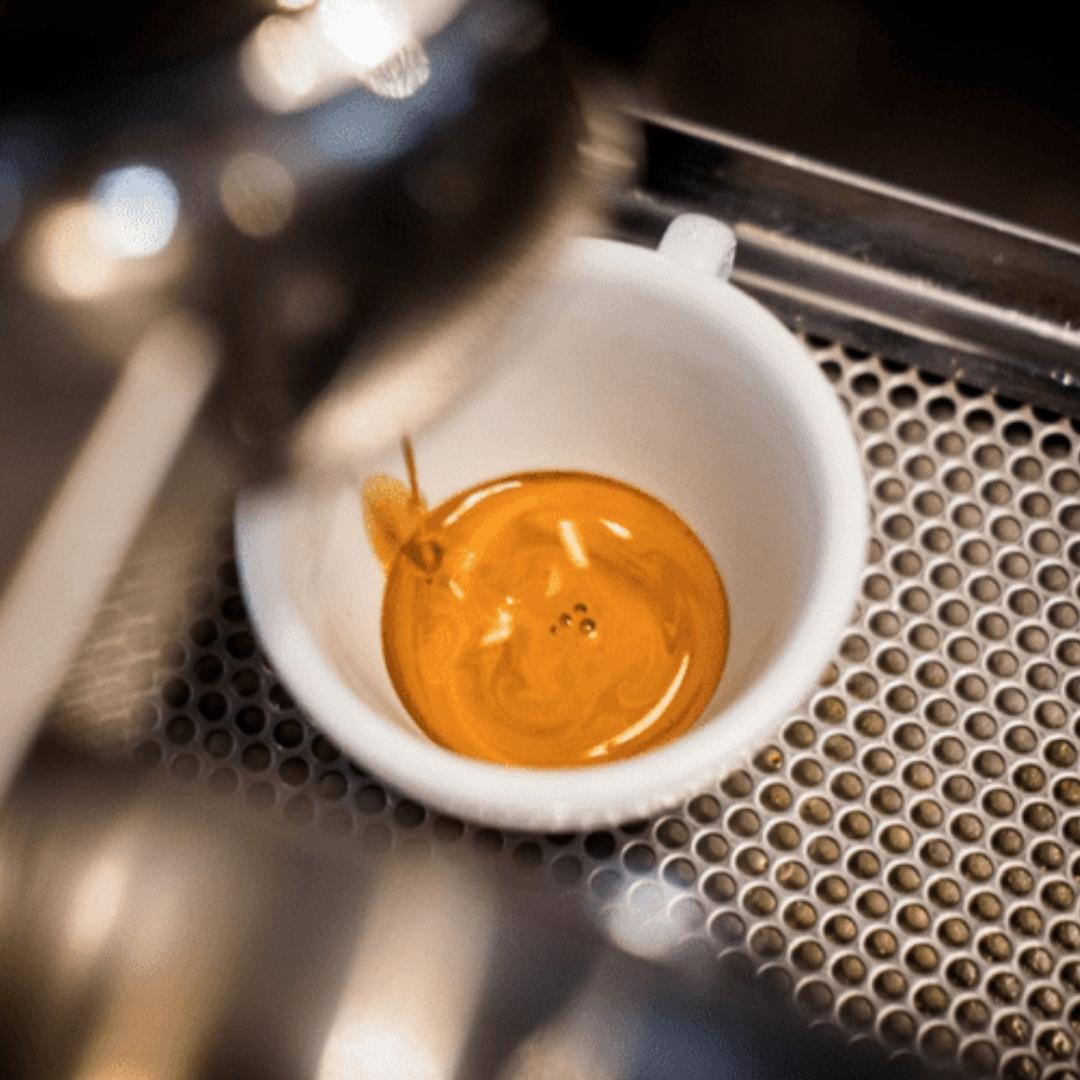
Precision Grinds
We grind our roasts with precision burr grinders to perfectly fit your favorite espresso drink. At Peak Flavor, we realize that dissolving and extracting espresso requires precision grinding to avoid bitterness.
For cappuccino, latte, and ristretto, we grind to 300 microns with >98% precision. For double espresso, Macchiato and Americano, we grind to 350 microns with >98% precision.
Precision grinding with conventional home coffee grinders is not possible. That's why we advise you use our pre-ground fresh roasts. Have a look at the Italian espresso collection to discover what grinds best fit your choice of espresso.
Fresh is Better. Not Bitter.
When we roast for Italian espresso, we ship the same day. Its the only way to guarantee you get Italian quality espresso with abundant crema delivered to your home.
Just like with fresh baked bread, you will recognize a fresh roast by this delicious smell in your mail box or that mouthwatering aroma as soon as you open the package.
Try a fresh roasted Italian espresso and discover the difference for yourself.
5 Tips for Naturally Sweet Italian Espresso
Discover How to Make Italian Espresso.
Tip #1
Use a naturally sweet coffee bean blend. Strictly high grown coffee beans contain more sweetness and are best suited for Italian espresso. Discover Italian Espresso.
Tip #2
Use small-batch, darker roasts with extended caramelization. Italian style, slow roasting yields natural caramel, honey, and vanilla flavor. Try our best selling Italian Espresso.
Tip #3
Use extra fine grinds (350 microns) with 98% precision to extract optimal sweetness for Italian espresso. Use Extra-Extra fine grinds (300 microns) to make cappuccino or latte. Review our best selling Italian espresso grinds.
Tip #4
Use 14 grams of coffee to 28 ml of water. This represents a 14:28 brew ratio to yield intense but sweet, mild and creamy Italian espresso. Explore our best Italian espresso grinds.
Tip #5
Use an espresso machine with an integrated burr grinder to keep espresso beans fresh as you only grind for what you need to avoid bitterness from oxidation.
Unleash the Essence of Italy in Every Sip
Discover the Pinnacle of Espresso with Peak Flavor Coffee
Imagine awakening to the heart of Italy with every sip, savoring an espresso that encapsulates the rich tapestry of Italian coffee culture. That’s the promise of Peak Flavor Coffee – the closest encounter to authentic Italian espresso without a passport. It's not just coffee; it's a ticket to the bustling piazzas and serene landscapes of Italy, right from your espresso machine.
Why Peak Flavor Coffee Stands Out in the Land of Espresso
In the search for the ultimate espresso, connoisseurs like you understand that Italian espresso isn't just about a drink; it’s an experience, a tradition, an art form. It’s the lifeblood of Italy, celebrated in every household and cafe. Peak Flavor Coffee is not just another blend on the shelf; it's the embodiment of that Italian spirit, meticulously crafted to bring the peak of flavor to your cup.
Navigating the Espresso Odyssey: The Four Challenges of Perfection
Every espresso lover knows the trials of perfecting home espresso. Peak Flavor Coffee has mastered the art of overcoming these challenges to ensure that every espresso is a testament to Italian craftsmanship:
- The Quest for the Right Beans: The journey begins with the beans. The wrong choice leads to a cup that's either too bitter or sour. That's why Peak Flavor Coffee selects only naturally sweet, strictly high-grown beans, perfect for that Italian espresso profile.
- The Mastery of the Italian Roast: Italian espresso is renowned for its slow, small-batch roast with extended caramelization. Anything less, and you risk bitter or burnt notes invading your cup. We at Peak Flavor Coffee have honed this process to ensure each batch meets the highest standards of Italian roasting tradition.
- The Precision of the Grinds: The granularity of your coffee grinds can make or break your espresso. Tiny variations could lead to over-extraction's bitterness or under extraction's weakness. Our commitment to precision grinding ensures that every particle contributes to the perfect balance of strength and flavor. Consider that your cappuccino or latte need grinds of 300 microns in size whilst an espresso, macchiato, Americano or Ristretto need 350 microns in size. A variance of more than 2% from these ideal grinds will result in bad taste you’ll definitively notice.
- The Freshness of the Roast: A stale roast is the nemesis of good espresso, introducing bitterness or rancid flavors. At Peak Flavor Coffee, we are obsessed with freshness, roasting and shipping always on the same day. We deliver fresh roasted espresso beans that promise abundant crema – the hallmark of a truly fresh roast.
The Eight-fold Path to Espresso Nirvana with Peak Flavor Coffee
Our commitment to the art of espresso shines through in these eight distinctive benefits that set Peak Flavor Coffee apart:
- Naturally Sweet: No more sugar-spooning! Our beans’ natural sweetness is a promise, delivering a delicate yet profound taste profile that delights the palate. We source naturally sweet coffee beans from the highlands of Brazil, Honduras, and Vietnam. Strictly high-grown coffee beans contain more natural sugars such as fructose and are ideally suited for roasting with the aim to get more caramel, vanilla and honey flavors.
- Rich & Creamy: A luscious texture that paints your mouth with richness, making every sip a luxurious indulgence. Our bean blends contain Grade-A Robusta beans with rich levels of natural coffee oils. It’s the natural coffee oils that not only provide rich and creamy espresso but also cause that beautiful crema, the best sign of fresh roasted Italian espresso quality.
- Intense but Mild: It's a bold statement in a demure package – intense notes wrapped in a gentle embrace, avoiding the harshness found in lesser brews. By harvesting coffee beans at the peak ripeness, our farmers ensure we can make espresso with low acidity beans. It makes our espresso intense but mild and sweet on the stomach.
- Rich Natural Caramel Taste: Slow Italian coffee roasting optimizes caramelization and is the Italian secret to unlocking a rich, natural caramel flavor that's as Italian as the Colosseum itself. Just like the Romans, we don’t believe in blond or light roasts as they lack the darkness required for proper caramelization.
- Abundant Crema: The proof of peak freshness and quality. Our espresso crowns your cup with a creamy, dreamy crema that's the envy of baristas.
- Unparalleled Freshness: Just like in Italy, we roast your order and ship on the same day. We deliver on the promise of freshness that you can smell even before brewing, ensuring that each espresso is as lively as the Italian spirit.
- Sustainable & Organic Sourcing: Our commitment to the planet is as strong as our coffee. We source our beans sustainably and organically, ensuring that your enjoyment supports a healthier Earth. For every coffee we sell, we donate to buy more coffee trees for our farmer families. By drinking Peak Flavor, you make a small but meaningful contribution to a greener planet and better livelihoods.
- Environmentally Friendly Packaging: We believe in responsible consumption. By minimizing packaging, we show our commitment to the environment, ensuring that our common coffee habit doesn’t cost the earth.
From Our Heart to Your Home Espresso Maker
The Peak Flavor Coffee Difference: At Peak Flavor, we are more than just purveyors of fine Italian espresso. We are custodians of Italian heritage, ensuring that every grain of coffee is a chapter of Italy's coffee story. Our beans are not just grown – they are nurtured, and our roasting isn’t just a process – it's a passion.
When you choose Peak Flavor Coffee, you're not just buying coffee; you're investing in an experience that celebrates Italian coffee authenticity.
Dont just take our word for it. Discover why people are raving. read about the 8 reasons to love Italian espresso.
Your Espresso Machine’s Best Companion
Your home espresso machine deserves the best. It craves a coffee that can harness its potential to deliver a divine cup. Explore how easy it is to use our Italian coffee to make delicious cafe latte , cappuccino, macchiato, or any other espresso-based coffee of your choice.
Ready to turn your morning coffee routine into a ritual of Italian authenticity? Start your mornings with the kind of coffee that whispers the secrets of Italian artisans. Peak Flavor Coffee invites you to join a community of discerning coffee lovers who accept nothing less than the authentic Italian experience.
Experience Peak Flavor Today
Don't just take our word for it. Discover why Peak Flavor Coffee is celebrated as the best and only authentic Italian espresso in America. Elevate your coffee experience – your espresso machine is waiting to unlock the symphony of flavors that Peak Flavor Coffee offers.
Discover best Italian espresso for you and savor the taste of Italy with every shot. This is not just coffee; this is Peak Flavor Coffee – where every bean tells a story, and every sip is a masterpiece.
Connect with us, and let's embark on this journey together. Share your experiences, your mornings, your coffee moments with us. Peak Flavor Coffee isn't just about providing the finest Italian espresso; it's about building a community of enthusiasts who live and breathe the true essence of Italy in every cup.
Benvenuto to the family – your espresso adventure awaits.
Shop By Coffee Maker
Italian Coffee Questions
Italian espresso is naturally sweet, mild and creamy.
Italian espresso is made from a naturally sweet coffee bean blend and roasted fresh with extended caramelization. Italian espresso grinds are extra fine when used for espresso, Italian ristretto or Italian Americano. Italians grind espresso beans a little finer when they intend to use the espresso for Italian cafe latte, Italian cappuccino, or Italian macchiato
Discover naturally sweet Italian espresso in our Italian coffee collection.
Yes. Italian espresso can be naturally sweet when you use naturally sweet coffee beans, a fresh roast, and an extra fine grind.
In Italy, using a fresh roast to make Italian coffee is the standard everywhere. Here in America, it is a little harder to find a fresh roast.
When you start paying attention to the roast dates on the packaging, you'll notice that most grocery store coffee was roasted more than 120 days ago.
Discover our fresh roasted Italian espresso.
Fresh roasted Italian espresso is the base for latte and cappuccino, the most popular coffee drinks world-wide. Italian espresso is also the base for macchiato, ristretto, and Americano coffee.
When we make the Italian espresso base for latte and cappuccino, we use a naturally sweet coffee bean blend, roast fresh with extended caramelization and custom grind a little finer.
We call these the 3 steps to better Italian espresso. These steps make it easier for you to brew an authentic Italian espresso at home with relative ease.
Try a Peak Flavor espresso for your own latte or cappuccino and judge for yourself.
Naturally sweet coffee beans and Italian coffee roasting for more caramel flavor are the key ingredients for Italian espresso. Using fresh roasted coffee is the secret to making naturally sweet Italian coffee at home.
You can recognize a fresh roast when your espresso has abundant crema, the thick foam on top of your espresso. This foam forms when the roast releases some of the volatile aromatic compounds, which are naturally trapped in roasted beans.
Your espresso machine brews with pressure and releases these aromas. Those are the same volatile aromas you can smell when you open a fresh roasted coffee package. As the coffee roast ages, the roasted beans slowly release these gasses over time.
If you are making Italian espresso with recently roasted coffee beans, your crema will be more abundant and the smell more pronounced.
Discover Italian espresso for yourself.
Coffee beans from coffee plantations at higher elevations in the mountains grow a little slower than coffee beans grown at lower elevations or at sea level.
As coffee cherries slowly ripen, there is more time to develop natural sugars such as fructose.
More natural sugars make high-elevation coffee beans a lot sweeter than commodity coffee beans which grow at lower elevations.
At Peak Flavor Coffee, we select coffee bean blends from mountain plantations only because they contain more natural sweetness.
When we roast naturally sweet coffee beans for more caramelization, you get naturally sweeter espresso.
Admittedly, this is not our invention. Using naturally sweet, high-altitude coffee beans is the standard for Italian espresso.
Italian coffee roasting extends the phases of the roast during which caramelization takes place.
Caramelization happens when natural sugars (carbohydrates) develop as they are exposed to heat.
At Peak Flavor, we extend the caramelization by slowing down the roasting process in the critical phase of the roast.
Admittedly, we did not invent this roasting style. Small batch Italian coffee roasting is all about slowing down the roast to increase the caramel notes in your coffee. It is probably one of the main reasons why Italian espresso became the base for the most popular coffee drinks.
A slow, small batch, medium dark roast with extended caramelization characterizes an authentic Italian espresso roast.
At Peak Flavor, we roast in 3 different ways for Italian expresso, depending on what drink you use the espresso base for.
Our first roast is simply for espresso or ristretto.
Our second Italian espresso roast is for Italian Cafe latte, cappuccino and macchiato. This roast is a little longer to make sure you have full espresso flavor after adding milk and milk foam.
Our third espresso roast is for Italian Americano. In this case, the slow roast is extended during caramelization to make sure the caramel notes come through also after you add a bit more water.
Try our Italian coffee collection for espresso, ristretto, Latte, Cappuccino, Macchiato, or Americano.
When you aim to use your Italian espresso as a base for latte or cappuccino, you need your espresso machine to dissolve and extract all the available sugars and caramel notes.
The way to optimize espresso machine extraction for more natural sweetness is by adjusting the grind.
At Peak Flavor Coffee, we custom grind your Italian espresso for latte, cappuccino and macchiato. We adjust by grinding just a little finer than for straight Italian espresso, ristretto or Americano. A finer grind ensures that you can notice the sweetness also after you add milk or milk foam.
No. Coffee strength and roast darkness are different concepts and are not necessarily related.
Coffee strength simply refers to how many coffee grinds are dissolved and extracted by your coffee maker and end up in your cup. Just like the alcohol level in a beer, coffee strength is expressed as a percentage of grinds to water in your cup.
A darker roast is more brittle and porous, which makes it easier for your coffee maker to dissolve and extract different flavors and aromas. But this does not necessarily add to coffee strength.
At Peak Flavor, we steer away from extra dark roasts because the extra roasting may cause burnt notes to dominate the more subtle sweetness of naturally sweet coffee beans.
Our Italian espresso roast is a little darker than medium roast. But we avoid roasting to second crack because it would cause bitterness in your coffee.
The brew ratio for an authentic Italian espresso is 14 grams of coffee to 28 grams of water.
At Peak Flavor Coffee, we recommend using a little more and finer coffee grounds for latte, cappuccino, and macchiato.
Crema is simply the Italian word for cream.
Crema is the natural head of foam that forms on top of an espresso when your coffee roast is fresh.
Espresso is brewed under pressure, which dissolves the gas that was formed during coffee roasting. As time passes after coffee roasting, the coffee naturally loses these gasses in a process called degassing. If coffee roasting happened recently, a lot of gas is still present and thick, abundant crema on top of your espresso will be the result.
A dense layer of crema is a good indication that your coffee is freshly roasted.
Abundant cream makes your Italian espresso sweet, mild and creamy.

